Welcome to the Chronicles of Chef Journey’s Blog
With those words, the adventure of this blog begins. Let me share with you a bit about the heart and soul behind Chef Journey’s blog.
Upon retiring and landing in the vibrant landscapes of Nicaragua, I found myself on a quest to chase away the boredom that had started to creep in. It was then that I decided to gather the fragments of my past—my notes, my photographs, my recipes, and the myriad places where I’ve rolled up my sleeves and immersed myself in the culinary arts. This blog is not just a collection of memories; it’s a tapestry woven with the rich history, diverse cultures, breathtaking cities, serene countrysides, tantalizing foods, exquisite spirits, and most importantly, the remarkable people I’ve encountered along the way.
In the beginning, I enlisted the help of various folks to bring my vision of a website to life. Yet, despite their efforts, it never quite captured the essence of what I wanted to convey. Maybe it was my limited knowledge of the internet or perhaps my ideas were simply lost in translation. Then came Petro, a friend who over the past two or three years has grown to understand not just what I say, but what I truly mean.
Our journey together on this blog starts from the very beginning—my childhood. From there, it will travel through the many chapters of my career and the diverse countries I’ve had the privilege to explore. This blog is a living, breathing work in progress, and I hope you’ll join me for the ride, enjoying the stories and the pictures as they unfold.
With a little help from ChatGPT, I aim to keep grammatical errors to a minimum—though I must admit, I am no Hemingway. His works were the first I read in English and remain a cherished inspiration. I’m just a chef with stories to tell. Many of these tales will eventually find their way into the different books I’m writing about my life.
So, here we are. I promise not to make it too long. Join me as I share my journey, one story at a time.
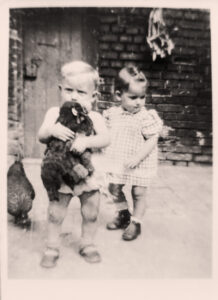
Young Gert with his cousin, sharing innocent smiles and unforgettable childhood memories

Riding the steam train through the enchanting Harz Mountains, a journey filled with wonder and nostalgia
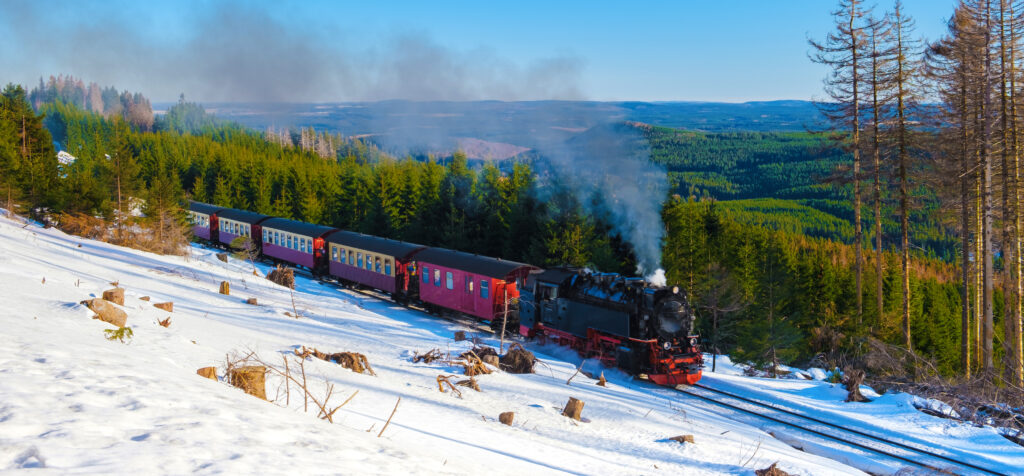
Riding the steam train through the enchanting Harz Mountains, a journey filled with wonder and nostalgia



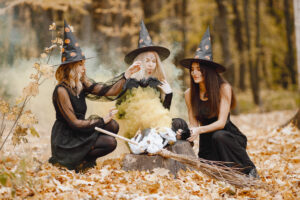

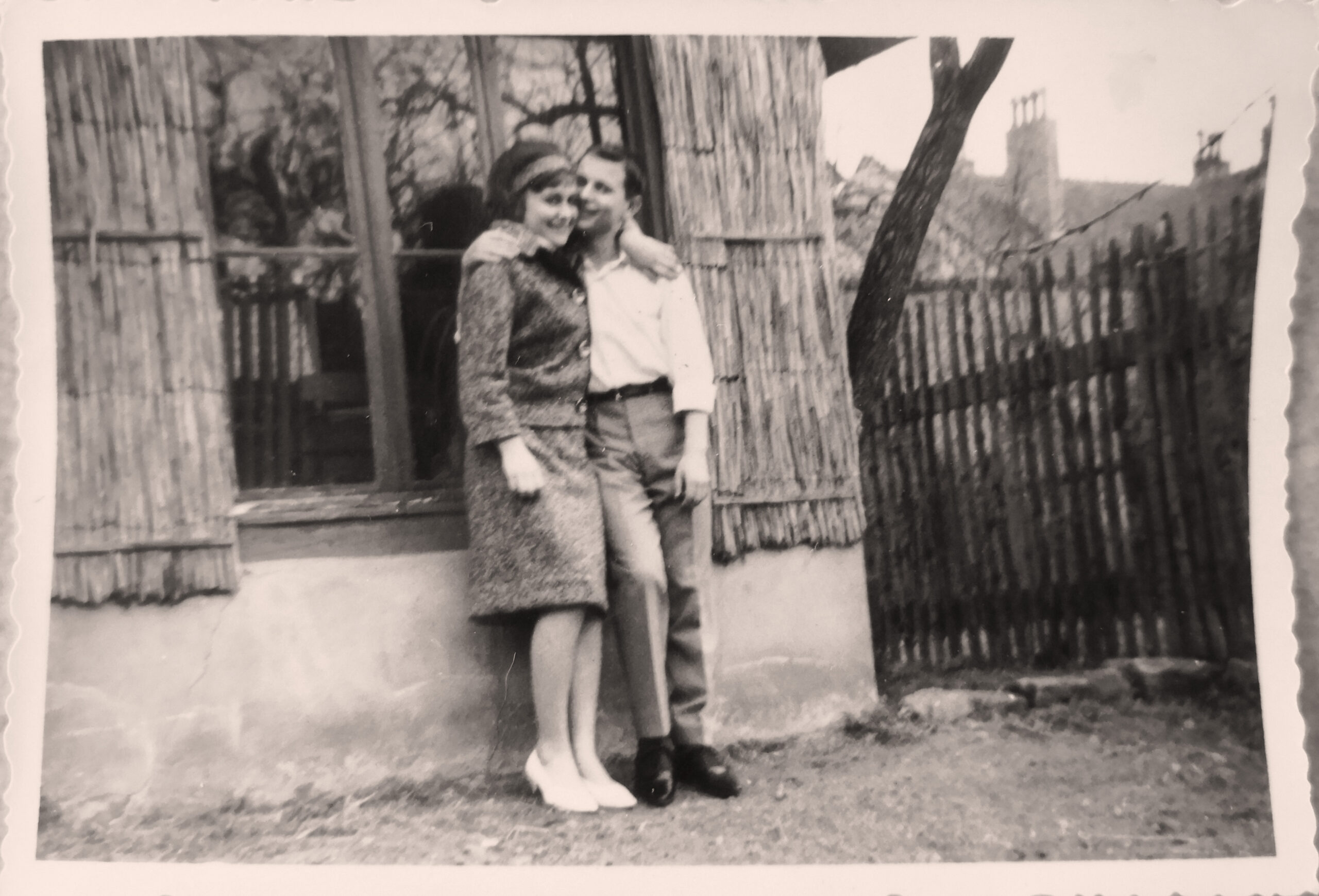


Sachsen-Anhalt: A Whirlwind Tour Through Time and Taste Buds
Ladies and gentlemen, culinary adventurers, and history buffs, buckle up! We’re about to embark on a rollicking jaunt through Sachsen-Anhalt, a German region so steeped in history it practically marinates in it. This isn’t just a history lesson; it’s a time-traveling escapade with a side of scrumptious anecdotes!
Where History Meets Hilarity: The Sachsen-Anhalt Saga
First off, let’s set the scene: Sachsen-Anhalt, nestled in the heart of Germany, is like an open-air museum, but with better food and fewer bored schoolchildren. This place is older than your favorite vintage wine. The air practically hums with tales from the Holy Roman Empire, Martin Luther’s Reformation ruckus, and more recently, some rather grim DDR (East Germany) memories.
A Cavalcade of Castles and Cathedrals
Begin your journey in Quedlinburg. This town isn’t just old; it’s UNESCO-old. We’re talking cobblestone streets and half-timbered houses that lean like they’ve had one too many local beers. Speaking of beers, the abbey here dates back to 936 AD. Yes, you read that right. And the locals will swear on their grandmother’s strudel that it’s haunted. Ghosts with a taste for beer, perhaps?
Next, zip over to the Dessau-Wörlitz Garden Realm. Imagine a landscape architect on a sugar rush, and you’ve got this place. It’s a UNESCO World Heritage Site, and for a good reason. It’s like Mother Nature had a fling with Baroque art, and this place is their love child.
Luther, Not the Superhero, But Almost
Now, let’s talk about Martin Luther. Wittenberg is where he famously nailed his 95 Theses to the church door, sparking the Protestant Reformation. Today, you can visit his house, which is now a museum. It’s like walking into a history book, but way more fun, because, let’s face it, Luther was the original rebel.
Harz Mountains: Witches and Peaks
And oh, the Harz Mountains! If you’re into witches (and who isn’t?), the Harz region is your go-to spot. The Brocken peak is where Goethe set a witches’ sabbath in ‘Faust,’ and they celebrate Walpurgis Night here like it’s Halloween’s cooler cousin. Hiking, history, and a hint of the supernatural – what’s not to love?
Industrial Charm and Bauhaus Bling
Don’t forget about the Bauhaus movement in Dessau. This is for the design and architecture buffs. The Bauhaus School building is like the cool, minimalist uncle of architecture. And while you’re at it, check out the industrial charm of the Ferropolis. It’s like a theme park for heavy machinery. Think Mad Max meets Bauhaus.
Foodie Heaven: From Sauerbraten to Sweet Doppelkümmel
Culinary-wise, Sachsen-Anhalt doesn’t play around. Try the Sauerbraten, a pot roast that’s like a warm hug for your stomach. And for dessert? Baumkuchen, a layered cake that’s as fun to eat as it is to say. Wash it down with a shot of Doppelkümmel, but be warned: it’s like kissing a licorice dragon.
So, there you have it, a whirlwind tour of Sachsen-Anhalt, where every cobblestone has a story, and every meal is a chapter in a historical saga. Whether you’re a castle enthusiast, a nature lover, a history geek, or just a wandering foodie in search of the next best bite, this German gem has got you covered. Pack your bags, bring your appetite for adventure (and food), and dive headfirst into the deliciously diverse world of Sachsen-Anhalt. Trust me; it’s a trip through time you won’t forget!
Magdeburg: A City of Firsts and Phoenixes
Enter Magdeburg, a city so resilient it’s practically a phoenix in urban form. It’s been around since Charlemagne decided to set up camp in 805 AD and has been through more drama than a soap opera. Remember Otto I, the Holy Roman Emperor? This was his hood. Visit the Magdeburg Cathedral, a Gothic masterpiece that’s been standing since the early 13th century, despite having a history that reads like a Game of Thrones plotline.
And while in Magdeburg, you simply can’t miss the Grüne Zitadelle, designed by Friedensreich Hundertwasser. It’s like someone let a fairy-tale architect loose with a box of crayons. Funky, quirky, and a total Instagram magnet.
Halle: Handel and Halloren
Next up, Halle, a city that’s not just old, but charmingly so. It’s the birthplace of George Frideric Handel, the Baroque music rockstar. Every year, the Handel Festival here turns the city into a classical music rave.
Don’t leave Halle without trying the local delicacy – Halloren Kugeln. These chocolate balls are to die for, and they have a history that goes back over 200 years. It’s like popping a piece of history in your mouth, but sweeter.
Naumburg: Cathedrals and Carvings
Naumburg is another must-see. Its cathedral, a UNESCO World Heritage Site, is home to the famous statue of Uta, considered one of the most beautiful women of the Middle Ages. She’s so captivating that some say she inspired Walt Disney’s Evil Queen. Now, that’s what I call a timeless beauty!
The Romanesque Route: A Road Less Traveled
For those who enjoy the road less traveled, the Romanesque Route is your kind of adventure. This scenic trail links up 80 Romanesque buildings across Sachsen-Anhalt. It’s like a pub crawl, but with ancient architecture. And speaking of pubs, make sure to sample the local ales along the way.
Merseburg: Where Sorcery Meets Royalty
Merseburg, with its magic spells (yes, you heard right, magic spells!) and an imposing cathedral, is like stepping into a medieval fantasy novel. The Merseburg Incantations, the oldest known pieces of German literature, are all about spells and charms. Harry Potter, eat your heart out!
Culinary Coda: A Feast for the Senses
Before you leave Sachsen-Anhalt, indulge in the culinary wonders one last time. From hearty Harz cheese to the mouthwatering Mansfelder lamb, there’s a flavor for every palate. And for the sweet-toothed, the Quarkkeulchen, a delectable dessert made of quark and potatoes, will leave you dreaming about it for days.
Epilogue: Sachsen-Anhalt, Where Every Stone Tells a Story
In conclusion, Sachsen-Anhalt is not just a destination; it’s a journey through centuries. It’s a place where every stone tells a story, every dish has a history, and every visit becomes a chapter in your own personal history book. So come for the castles, stay for the cuisine, and leave with stories that will make you the most interesting person at any dinner party. Sachsen-Anhalt awaits!
From Birthplace to Culinary Wonderland: A Chef’s Homage to Sachsen-Anhalt
Welcome to the Harz Mountains, my fellow wanderlust-infected friends! This isn’t just a mountain range in Germany; it’s a place where legends come alive, nature flexes its muscles, and history whispers from every craggy corner.
A Mythical Introduction: Witches and Wizards Welcome
Let’s start with the folklore – because, honestly, what’s a mountain without a good old witchy tale? The Harz is famously home to the Brocken, the highest peak, and star of many a local legend. The most famous? Walpurgis Night. Picture this: a night where witches supposedly gather and hold wild parties with the devil himself. It’s like the ultimate Halloween bash, but with more broomsticks and less candy. If you’re there on April 30th, keep an eye out for any suspiciously festive crones.
Nature’s Own Theme Park: Peaks, Valleys, and Hidden Treasures
Nature enthusiasts, prepare to be awestruck. The Harz National Park is a smorgasbord of scenic vistas. Thick forests, rushing streams, and misty moors – it’s like stepping into a landscape painting that decided to crank the beauty dial up to eleven. Hiking here is not just a walk; it’s an odyssey. Each trail comes with its own soundtrack – a symphony of bird calls, rustling leaves, and the occasional deer sighting.
Mining for History (And Silver)
But wait, there’s more! The Harz region was once the silver mining capital of Germany. Towns like Goslar and Quedlinburg (UNESCO World Heritage Sites, no less) are straight out of a fairy tale, with ancient mines you can actually tour. Descend into the depths of the Rammelsberg mine, where the walls hold stories of miners who probably never imagined tourists taking selfies where they once toiled.
Steam Up Your Journey: The Harz Narrow Gauge Railways
For a dash of nostalgia, hop aboard the Harz Narrow Gauge Railways. These steam-powered beauties chug through the mountains like charming relics from a bygone era. It’s like time-traveling, but with more soot and less existential crisis.
The Mystical Quedlinburg: Where Timelines Tangle
Quedlinburg, oh Quedlinburg. This town deserves its own chapter. Half-timbered houses that have seen more history than most textbooks, a castle perched like an eagle’s nest, and winding streets that make GPS systems weep. Fun fact: it has over 1,300 half-timbered houses dating back over six centuries. It’s like the town hit ‘pause’ on modernity and decided to have a long, leisurely chat with history.
The Culinary Highs: From Hearty Stews to Mountain Brews
And what’s a journey without tantalizing your taste buds? Harz cuisine is hearty, soul-warming, and probably not recommended by your dietician. Think big stews, grilled sausages, and the legendary Harzer cheese – a pungent, low-fat delight that’s an acquired taste (and smell). Wash it down with some local beer; it’s as crisp as the mountain air.
In Conclusion: Harz Mountains, Not Your Average Hillside
So there you have it, a jaunt through the Harz Mountains, where every path leads to an adventure, every town has a story, and every meal is a celebration of the local spirit. Whether you’re here to chase witches, relive history, or just enjoy some good old-fashioned nature therapy, the Harz Mountains offer a little magic for everyone. Just remember to bring your hiking boots – and maybe a broomstick, just in case.
Savoring Sachsen-Anhalt: A Historical German Culinary Journey
I invite you on a delightful journey through some of the most iconic recipes from this storied region. Each dish is not just a recipe; it’s a page out of history, a story simmering in flavors and traditions.
1. Harzer Roller (Harz Cheese)
History: A pungent, low-fat cheese, this delicacy dates back to the 15th century. Traditionally made by miners, it became a staple for its long shelf life and nutritional value.
Ingredients:
Fresh, sour milk
Rennet
Salt
Instructions:
Heat the sour milk until curds form.
Add rennet to solidify the curds.
Drain and press the curds into small rounds.
Salt the rounds and age them until they develop a strong aroma.
2. Halloren Kugeln (Chocolate Balls)
History: Originating from the oldest chocolate factory in Germany, the Halloren Chocolate Factory, these chocolates are a sweet testament to the region’s confectionery history.
Ingredients:
200g dark chocolate
100g butter
200g powdered sugar
100g ground almonds
Rum or rum flavoring
Instructions:
Melt chocolate and butter in a double boiler.
Mix in powdered sugar and ground almonds.
Add a splash of rum or rum flavoring.
Form the mixture into small balls and let them cool.
3. Sächsische Sauerbraten (Saxony Pot Roast)
History: A marinated pot roast, typically horse or beef, Sauerbraten is a hearty dish with a history dating back to medieval times, often enjoyed during festive occasions.
Ingredients:
1 kg beef roast
500ml red wine vinegar
500ml water
2 onions, sliced
2 carrots, sliced
1 leek, sliced
2 bay leaves
10 juniper berries
5 cloves
100g sugar
2 tbsp flour
Salt and pepper
Oil for frying
Instructions:
Combine vinegar, water, vegetables, bay leaves, juniper berries, and cloves for the marinade. Marinate the beef for 2-3 days.
Remove the beef, pat dry, and season with salt and pepper.
In a pot, brown the beef on all sides in oil. Add the marinade and simmer for about 3 hours.
Remove the meat, strain the sauce, and thicken it with a roux made from flour and sugar.
Slice the meat and serve with the sauce.
4. Quedlinburger Senfbraten (Mustard Roast from Quedlinburg)
History: This dish highlights the region’s love for mustard, with Quedlinburg being known for its unique mustard varieties.
Ingredients:
1 kg pork neck
4 tbsp grainy mustard
2 onions, chopped
500ml beer
Salt and pepper
2 tbsp honey
2 tbsp vinegar
Oil for frying
Instructions:
Season the pork with salt and pepper, and coat it generously with mustard.
In a roasting pan, brown the pork on all sides in oil. Add onions and deglaze with beer.
Roast in a preheated oven at 180°C for about 1.5 hours.
Mix honey and vinegar, and glaze the pork during the last 30 minutes of roasting.
Let it rest, slice, and serve with the pan juices.
5. Harzer Grünkohl (Harz Kale Stew)
History: A winter staple, this kale stew is rich in history, often served with Bregenwurst, a local sausage. It’s a testament to the region’s agricultural roots.
Ingredients:
1 kg fresh kale, chopped
300g smoked pork belly
200g Bregenwurst or smoked sausage
1 onion, chopped
500ml chicken or vegetable broth
2 potatoes, diced
Salt, pepper, and a pinch of sugar
Instructions:
In a large pot, sauté onions and pork belly. Add kale and cook until wilted.
Add broth, potatoes, salt, pepper, and sugar. Simmer for about 1 hour.
Add sausage in the last 15 minutes of cooking.
6. Mansfelder Schichtkohl (Mansfeld Layered Cabbage)
History: This dish reflects the resourcefulness of the Mansfeld region’s cuisine, layering humble ingredients to create a comforting, hearty meal.
Ingredients:
1 large head of white cabbage, shredded
500g minced pork
1 large onion, finely chopped
2 cloves of garlic, minced
2 cups beef broth
1 tsp caraway seeds
2 tbsp vegetable oil
Salt and pepper to taste
Instructions:
In a pan, cook minced pork with onions and garlic until browned. Season with salt and pepper.
In a greased baking dish, layer half the cabbage, then the cooked pork mixture, and top with the remaining cabbage.
Sprinkle with caraway seeds and pour beef broth over the top.
Cover and bake in a preheated oven at 180°C for about 1 hour, until the cabbage is tender.
7. Dessauer Zwiebelkuchen (Dessau Onion Cake)
History: A savory, onion-laden treat, Zwiebelkuchen is synonymous with autumn in Germany, particularly in wine-growing regions like Dessau.
Ingredients:
For the Dough:
250g flour
15g yeast
125ml warm milk
1 tsp sugar
1 tsp salt
For the Topping:
500g onions, thinly sliced
200g bacon, diced
200ml sour cream
3 eggs
1 tsp caraway seeds
Salt and pepper
Instructions:
For the dough, mix yeast with warm milk and sugar. Add flour and salt, knead into a smooth dough, and let it rise.
Sauté onions and bacon until onions are soft.
Roll out the dough into a round cake pan.
Combine sour cream, eggs, caraway seeds, salt, and pepper. Add to the onion mixture.
Spread the topping over the dough and bake at 200°C for 25-30 minutes.
8. Anhaltiner Kartoffelklöße (Anhalt Potato Dumplings)
History: This is a classic German dumpling recipe, but with a regional twist from Anhalt, highlighting the simplicity and comfort of potato-based dishes.
Ingredients:
1kg potatoes
2 eggs
250g flour
Salt and nutmeg
Instructions:
Boil potatoes, mash them, and let cool.
Mix mashed potatoes with eggs, flour, salt, and a pinch of nutmeg to form a dough.
Form the dough into dumplings.
Boil the dumplings in salted water until they float to the surface.
9. Harz Forelle (Harz Trout)
History: Reflecting the region’s abundant rivers and streams, this dish showcases the freshness and simplicity of local fish preparation.
Ingredients:
4 fresh trout, cleaned and gutted
1 lemon, sliced
Fresh herbs (dill, parsley)
Salt and pepper
Flour for dusting
Butter for frying
Instructions:
Season the trout with salt, pepper, and stuff with lemon slices and herbs.
Dust the trout lightly with flour.
In a pan, melt butter and fry the trout until golden and cooked through.
10. Halberstädter Würstchen (Halberstadt Sausages)
History: Originating from Halberstadt, these sausages are renowned for their unique smoking method and flavor, a nod to the region’s sausage-making prowess.
Ingredients:
Halberstädter sausages (available at specialty German stores)
Instructions:
These sausages are pre-cooked and smoked. Simply heat them in simmering water for about 10 minutes.
Serve with mustard and a fresh roll or sauerkraut.
Through these recipes, you experience the essence of Sachsen-Anhalt’s culinary landscape – a fusion of history, tradition, and local flavors. Each dish is a testament to the region’s rich cultural tapestry and offers a unique taste of German culinary heritage. Enjoy your cooking and the delicious journey through Sachsen-Anhalt’s cuisine! In the grand tapestry of German confectionery, one cake stands tall – literally. Ladies and gentlemen, I present to you the Baumkuchen, often hailed as the “King of Cakes.” This cylindrical layered cake, resembling the rings of a tree when sliced, is not just a dessert; it’s a piece of culinary art steeped in history and tradition.
Historical Roots: A Cake with a Past
The origins of Baumkuchen are as layered as the cake itself. While its exact birthplace is debated, its presence
Baumkuchen: The King of Cakes – A Culinary Tale from Germany
has graced European kitchens since at least the early 19th century. Some culinary historians trace its roots back to the Hungarian and Austrian empires, while others attribute its invention to German bakers. What is undisputed, however, is its status as a celebratory cake, often associated with weddings and Christmas festivities.
Ingredients: A Symphony of Simplicity
The beauty of Baumkuchen lies in its simplicity. The traditional recipe calls for:
10 large eggs, separated
1 cup (200g) sugar
1 packet vanilla sugar or 1 tsp vanilla extract
1 pinch of salt
2/3 cup (150g) melted butter, cooled
1 cup (125g) all-purpose flour
1/3 cup (40g) cornstarch
Apricot jam (for glazing)
Dark chocolate coating (optional)
Creating the Majesty: The Art of Baking Baumkuchen
The process of making a Baumkuchen is a labor of love and requires patience and precision. Traditionally, it is baked on a rotating spit over an open flame, allowing each thin layer of batter to broil before the next layer is added. However, a simplified home version can be created using an oven and a broiler.
Preparation:
Preheat the oven to 180°C (350°F). Grease and flour a springform pan.
Beat the egg whites with a pinch of salt until stiff peaks form. Gradually add half the sugar, continuing to beat until glossy.
In another bowl, beat egg yolks with the remaining sugar and vanilla until creamy. Slowly mix in cooled melted butter.
Gently fold the egg whites into the yolk mixture.
Sift flour and cornstarch together and fold into the egg mixture to create a smooth batter.
Layering and Baking:
Pour a thin layer of batter into the bottom of the pan, spreading evenly.
Place under the broiler for 2 minutes or until golden brown.
Remove from the oven, add another thin layer of batter, and broil again.
Repeat this process until all the batter is used, creating distinct layers.
Finishing Touches:
Once cooled, remove from the pan and trim the edges to reveal the layered rings.
Heat apricot jam and brush over the cake for a glaze.
For a traditional touch, coat with melted dark chocolate.
Baumkuchen: A Symbol of German Baking
Baumkuchen is more than just a cake; it’s a symbol of German baking excellence and ingenuity. Its preparation is a spectacle, its taste, a balance of delicate flavors and textures. Whether coated in chocolate or served plain, each slice offers a visual and gastronomic journey through its intricate layers.
So there you have it, the Baumkuchen – a culinary monument that transcends the boundaries of ordinary baking, encapsulating history, tradition, and the unyielding spirit of German patisserie. Enjoy this regal dessert, and let each layer take you back in time to the royal courts of Europe, where it was savored with as much awe as it is today.
A Culinary Nostalgia Trip: Savoring the Flavors of East Germany (DDR)
Journey with me, if you will, back to a time and place where culinary delights were as complex and varied as the history they were cooked in – East Germany, known as the Deutsche Demokratische Republik (DDR). This culinary exploration is not just about the flavors and dishes; it’s a trip down memory lane, a reminiscence of a bygone era.
DDR Nostalgia: A Mixed Bag of Memories
During one of my sojourns through the former states of the DDR, I stumbled upon a curious establishment. It was a store, yet it felt like a museum, a vault of memories where visitors from the East came to reminisce. The DDR, for all its political and economic complexities, had a unique food culture that left an indelible mark on its people.
The Dichotomy of DDR Delights
In the DDR, culinary experiences were a mixed bag. There were the not-so-fond memories of scarce items like the Cuban oranges, primarily valued for their juice, and the infamous rice that was less than desirable. Yet, amidst these were gems like Tempo Lentils – a convenient baking mixture from the flour factory in Halle – and the once-beloved chocolate powder, which faced the harsh reality of bankruptcy in the worker’s state.
The Surprising Finds
Curiously, items like ‘lemon juice’ that bore little resemblance to actual lemon and tomato ketchup were staples, as was the elusive ‘cooking black rice’ – a luxury few could afford. But the most missed item? The bread rolls. Their absence was felt deeply, a poignant reminder of simpler culinary joys.
Inter shops: A Glimpse into the Other Side
For visitors to East Germany, the Inter shops were an eye-opener. Stocked with delicacies from around the world, they were a stark contrast to the average DDR market. Here, if you had the means or the status – like being a talented sportsperson – a world of culinary delights awaited you.
A Toast to the Past: Rotkäppchen and More
Contrary to the West German’s snub, Rotkäppchen, a sparkling wine produced for centuries in Saxony-Anhalt, was a local treasure. Its quality defied its reputation as a ‘cheap bubbly.’ This was just one example of the East’s hidden culinary gems.
DDR Staples: From Currywurst to Kiwi
The Currywurst, an untranslatable yet quintessential DDR dish, was akin to the American hotdog – a sausage doused in ketchup, sometimes nestled in a roll. As a child, enjoying this simple delight with my grandfather on a park bench remains a cherished memory.
Then there was the Broiler – a fried half chicken, and Kiwi, not the fruit, but a cherished liquor akin to a cherry whiskey. Nudossi, an East German answer to Nutella, and the Schlagersüsstafel, a chocolate substitute made from plant oils with little cocoa, complete with coupons for the next purchase.
The Convenience of Tempo Lentils
In a state where many women worked, fast and convenient cooking was a necessity. Tempo Lentils, along with pre-cooked beans and peas, were a godsend in the land of the workers’ paradise.
The Legacy of East German Sports and Education
Not all East German athletes were products of doping; the state’s scientific approach to sports was meticulous. My brother’s second wife, an accomplished swimmer, shed light on the rigorous, personalized training regimes that aimed to harness each athlete’s potential.
Sickenly: Sweetening the DDR Way
Sickenly, a scientific sweetener, was popularized with the slogan “Süßen ohne Sorgen” (“Sweet without worries”). It exemplified the DDR’s innovative approach to everyday ingredients.
Hidden Delicacies: The Secret Under the Counter
In the DDR, certain foods were kept hidden, reserved for friends and family of the salespeople – a subtle network of exchange and favor that included everyone from plumbers to hairdressers.
Erich’s Krönung and Jaeger Schnitzel
Erich’s Krönung, a spiteful nod to Erich Honecker, was a coffee blend extended with wheat, a product of necessity. The Jaeger Schnitzel, often mistaken for a slice of meat, was actually a sausage, an East German culinary staple.
DDR Food: A Reflection of Its Time
The DDR’s food culture was a complex tapestry, interwoven with the socio-political fabric of its time. From the simplicity of a Currywurst to the innovative Sickenly, each dish and ingredient tells a story of resilience, creativity, and the human spirit’s adaptability. As we look back, these flavors and memories form a rich, albeit nuanced, portrait of a time that continues to fascinate and inform our understanding of culinary history.
The Hohenlohe Ebene The Real Germany: Off the Beaten Path
The Hohenlohe Ebene is not your typical tourist hotspot, which is precisely why you should visit. It’s the real Germany, untouched by the typical tourist traps. So, come for the history, stay for the scenic views, and maybe have a chat with the locals about how their ancestors partied away the demons!
And that, dear readers, is just the tip of the historical iceberg that is the Hohenlohe Ebene – a place where history, humor, and a bit of ancient partying come together to create a story worth telling. Stay tuned for more tales from this quirky corner of Germany!

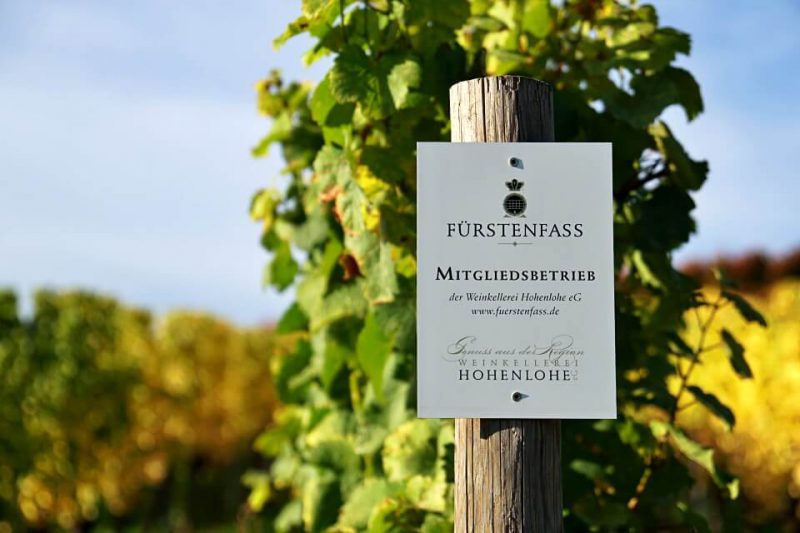
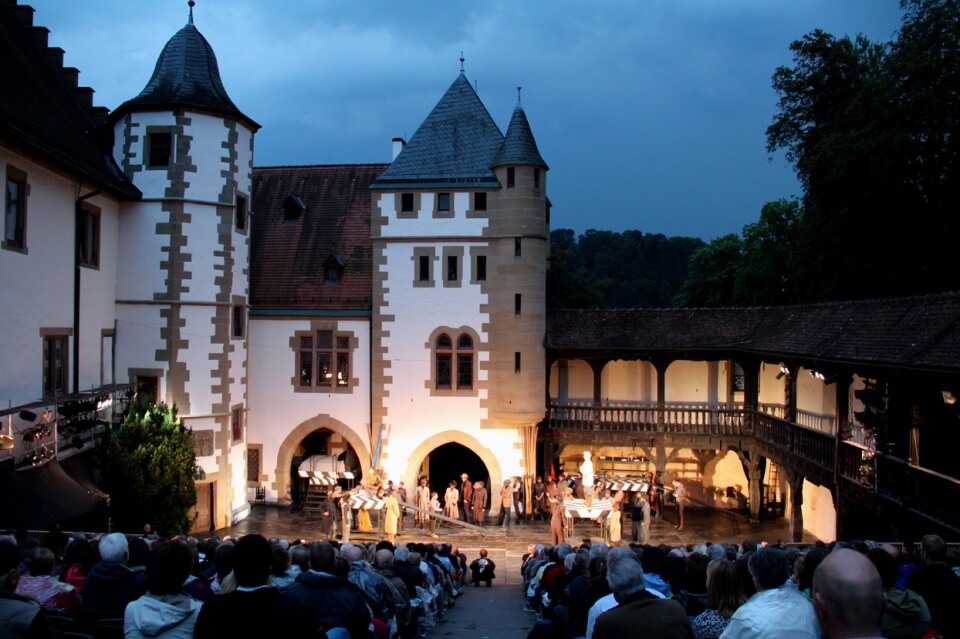
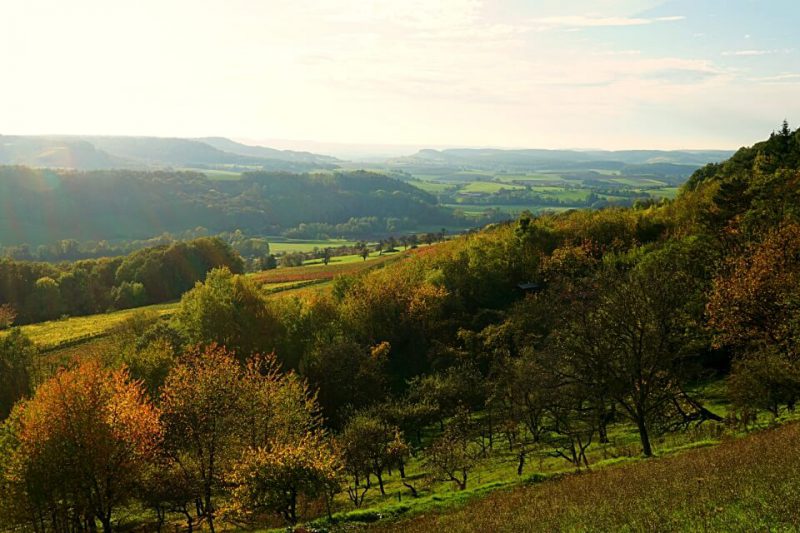

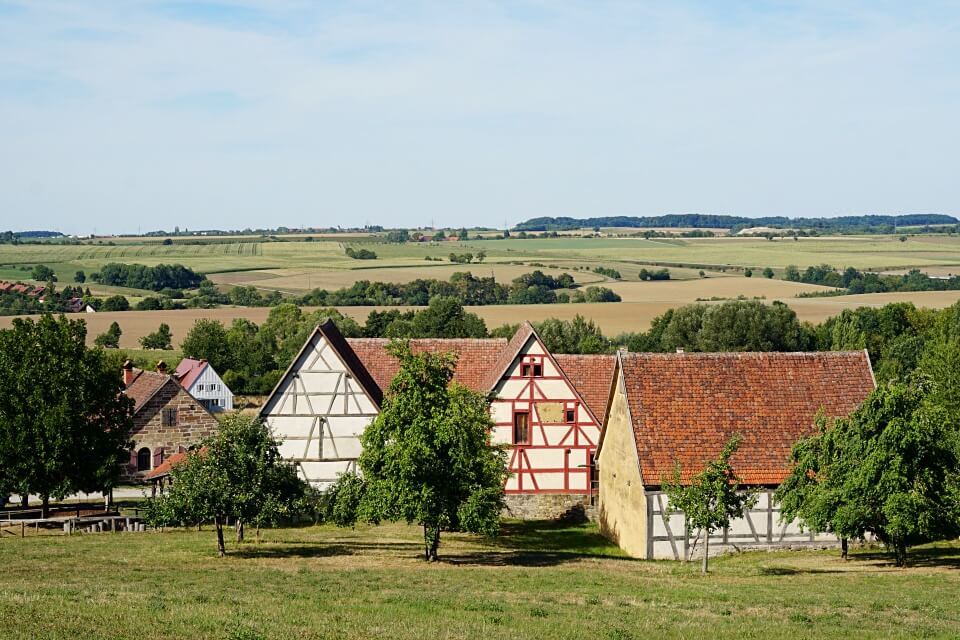
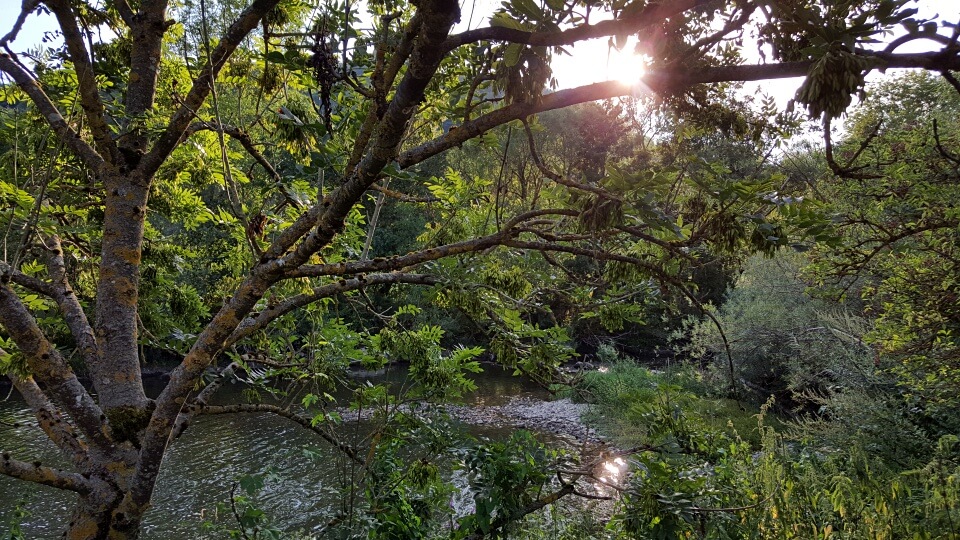
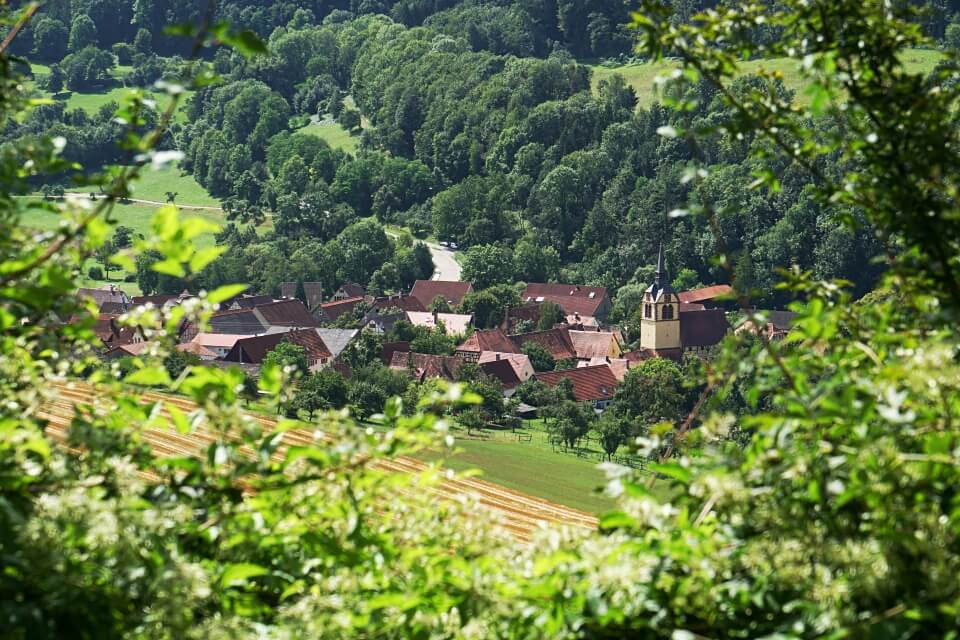
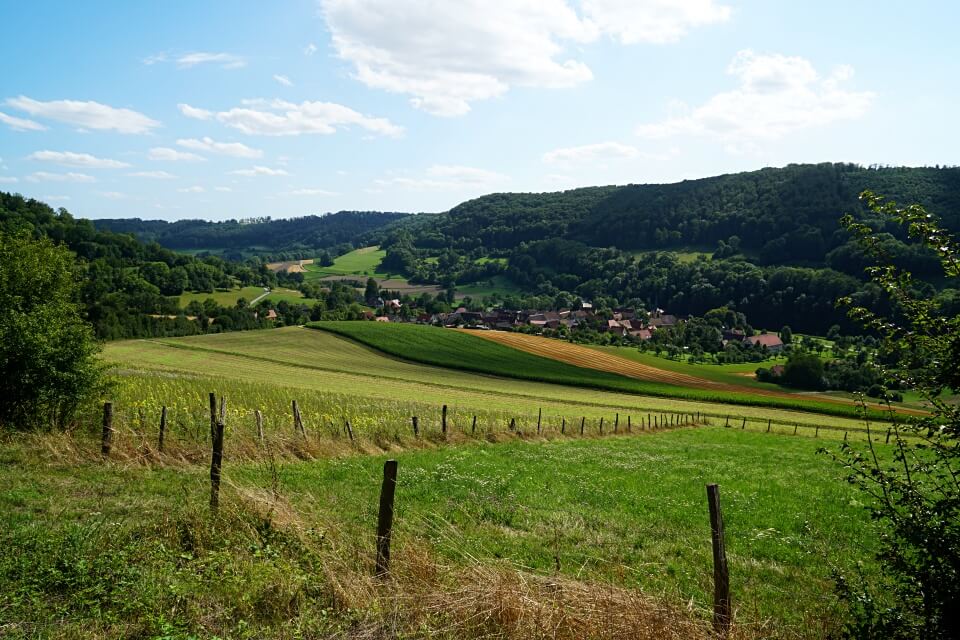


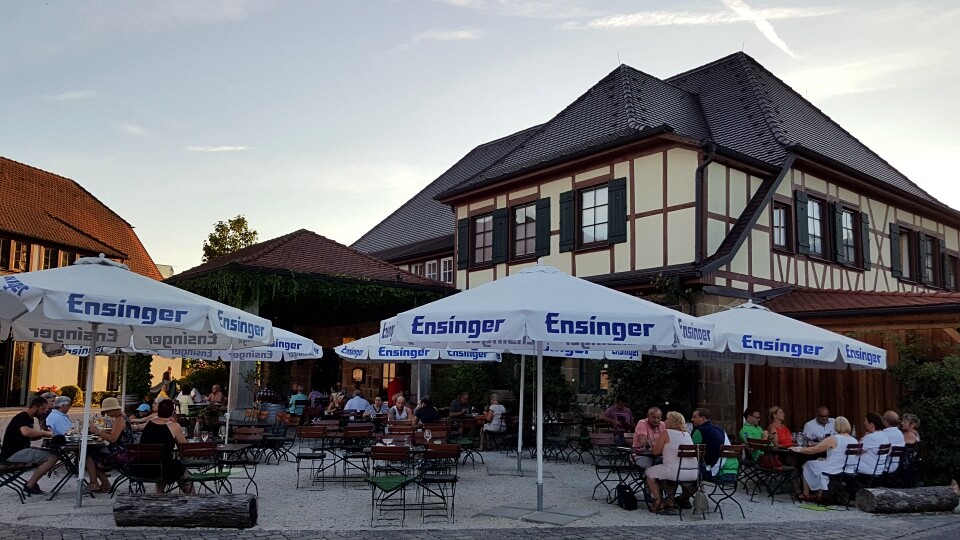
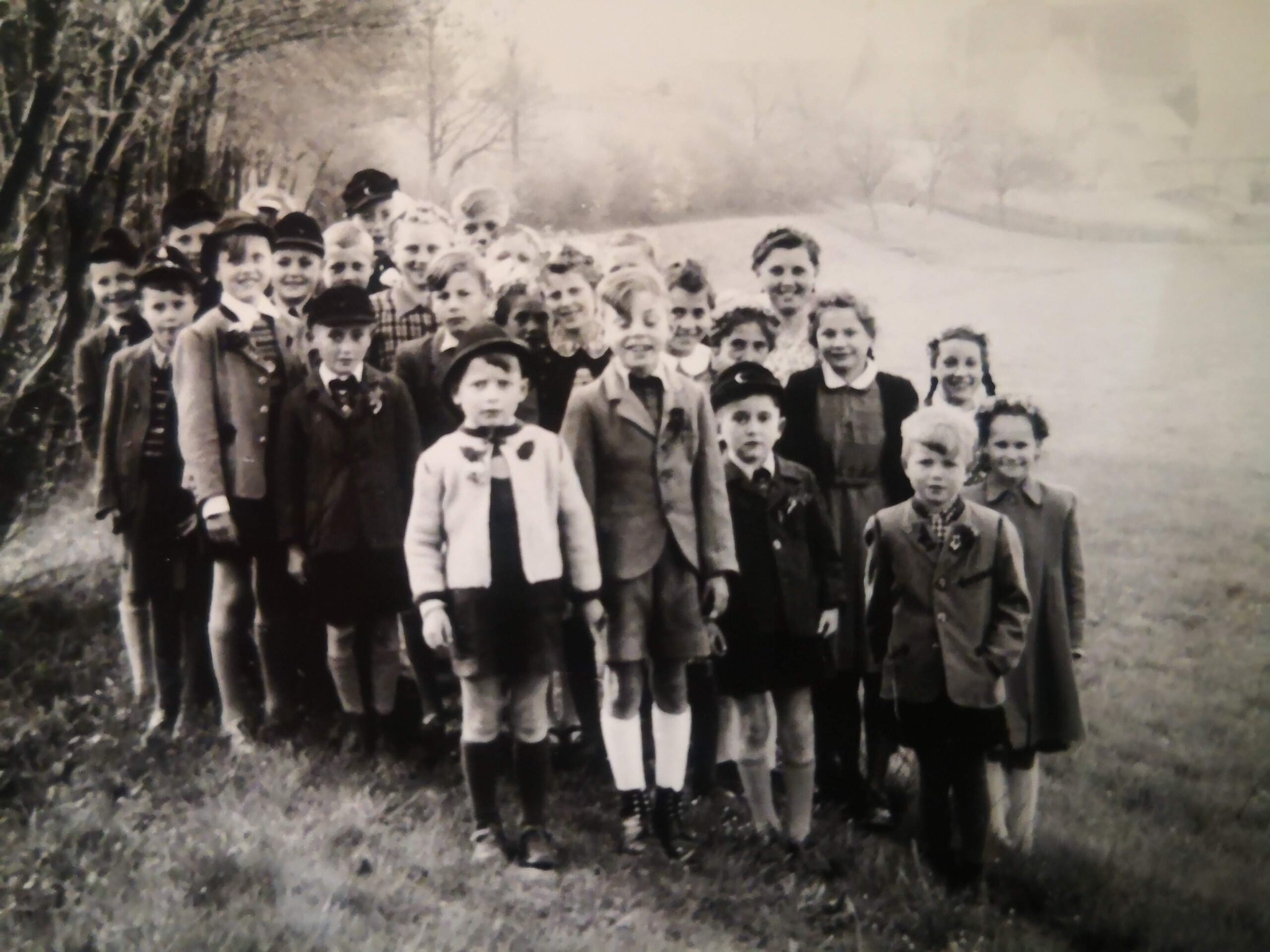
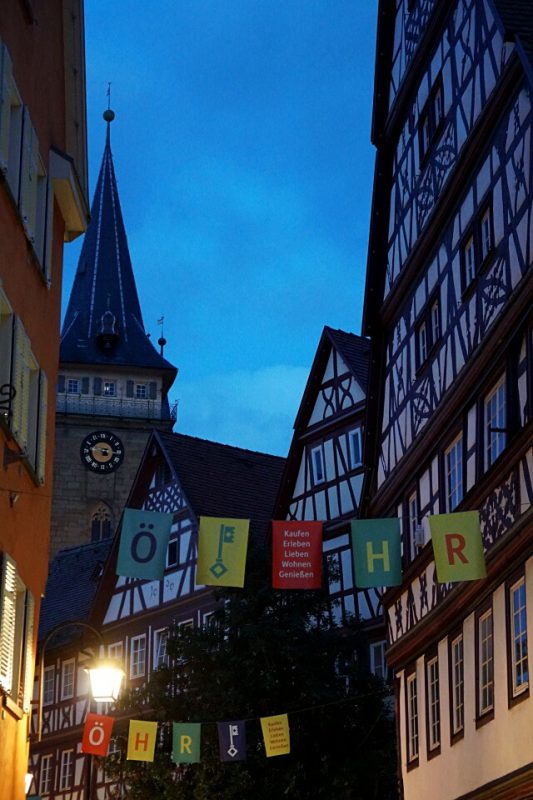
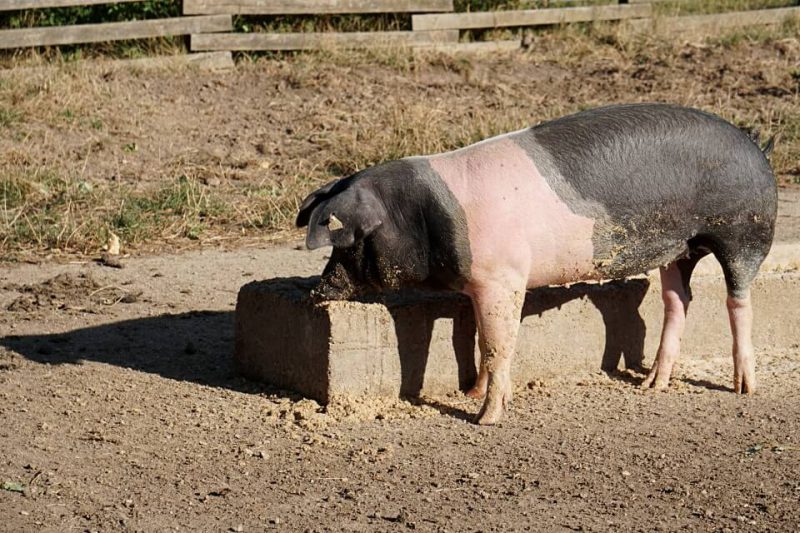


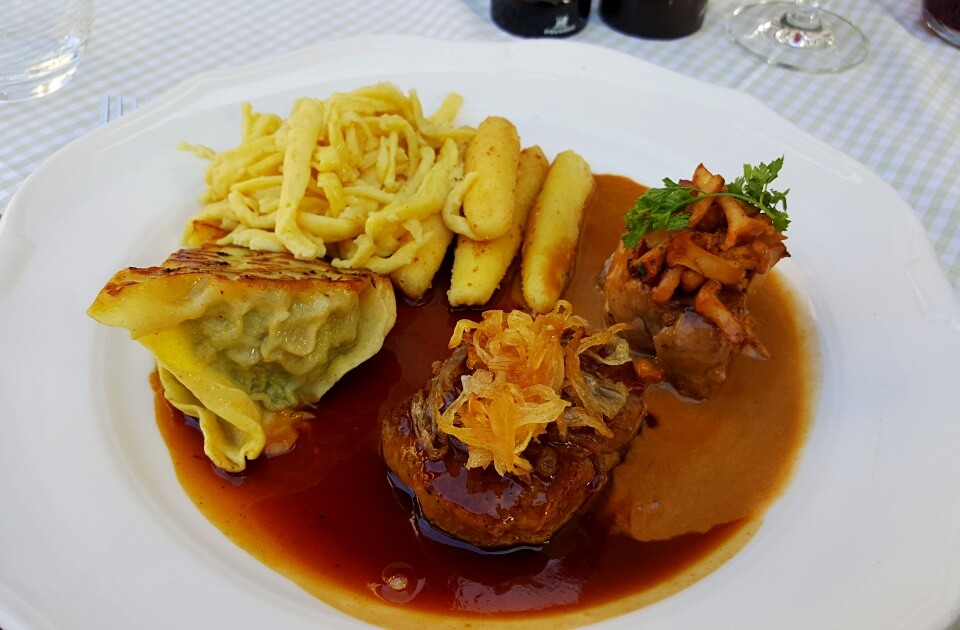
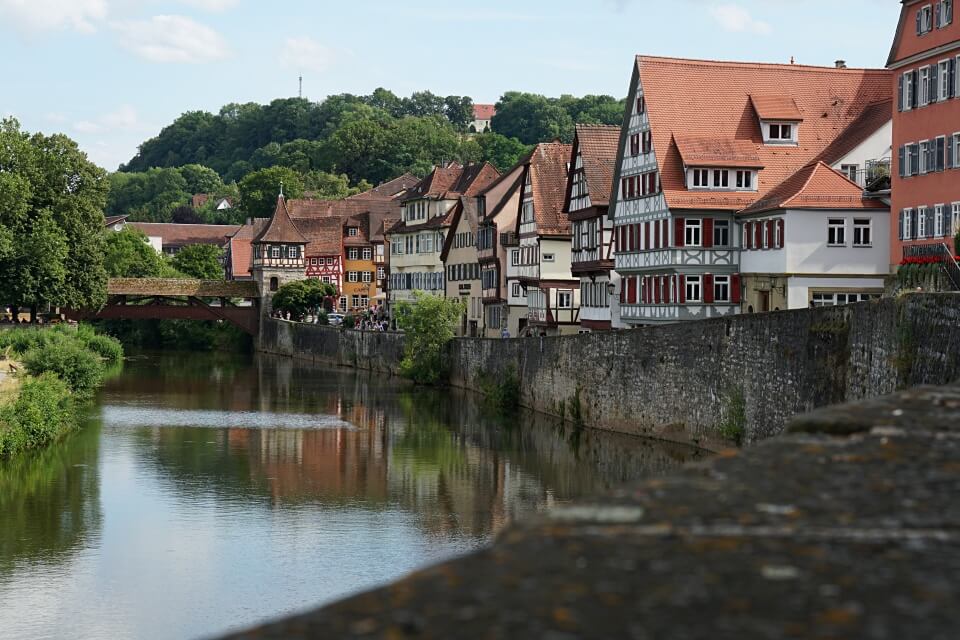
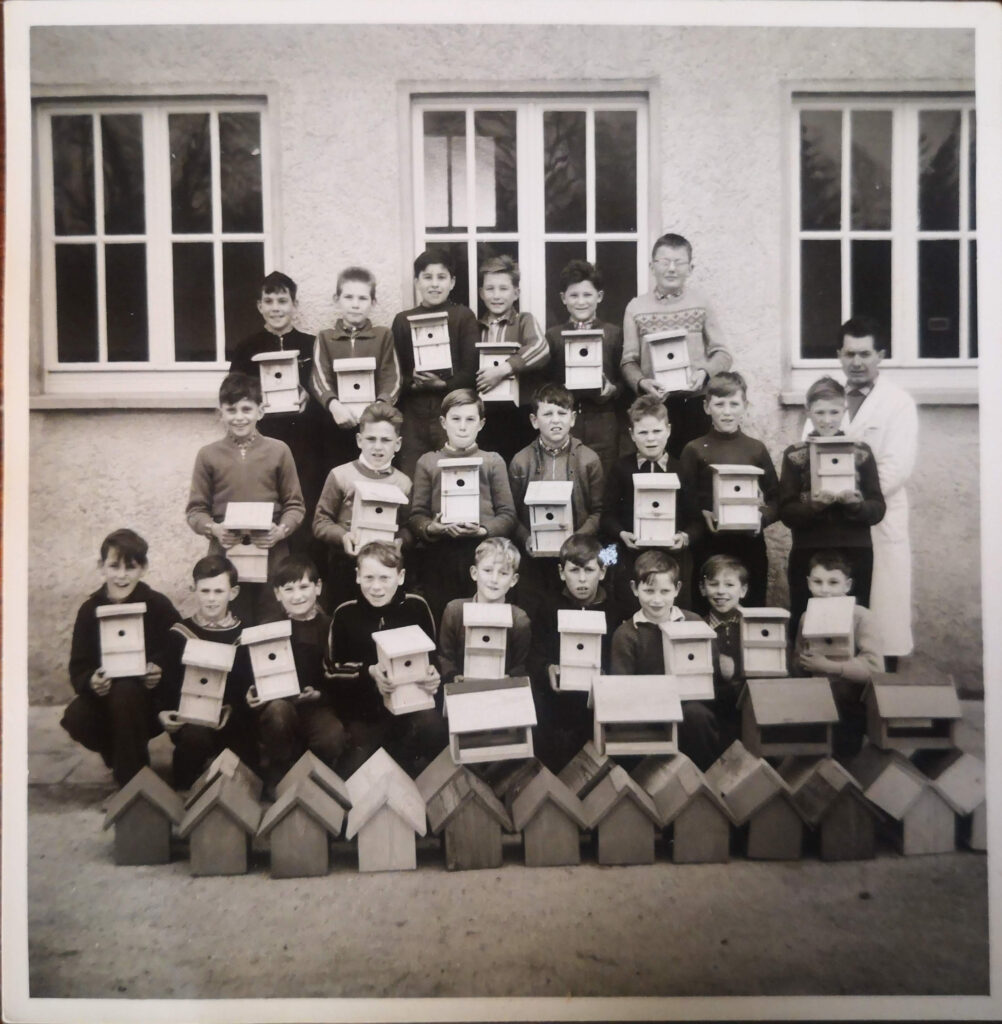
A Rollicking Ride Through My Childhood in Hohenlohe Ebene
Hold onto your hats, folks, as we embark on a nostalgic, sometimes topsy-turvy, always entertaining journey through my childhood in the Hohenlohe Ebene. This isn’t just any old tale; it’s a vibrant collage of village life, where every event was a community blockbuster and every day an adventure.
Village Festivities: A Party for Everything!
In our little village, we never missed an excuse to throw a party. Weddings, birthdays, or even the arrival of a new baby – it seemed like the whole village turned out, ready to dance, eat, and celebrate life. Imagine a place where everyone genuinely cared for each other, differences aside. A handshake was your bond, and a promise meant something – a world that would make a modern lawyer weep!
Lessons in Empathy and Skepticism
My mother was the village’s unofficial empathy coach. Her mantra? “Walk a mile in their shoes before you pass judgment.” Meanwhile, Dad was the local skeptic-in-chief, especially about organized religion. He believed in the good-vs-evil showdown, where you get to pick your side. No divine referees involved.
School Days: From One-Room Wonders to Terrifying Teachers
My school journey began in a cozy one-room affair, conveniently located right under our apartment. No playing hooky for me – my excuses had to be Oscar-worthy. Transitioning to a bigger school was like stepping onto a new planet, complete with its own Darth Vader disguised as the headmaster. His teaching tools? A stick and an iron hand. Talk about old-school discipline!
The Great Outdoors Classroom
But hey, it wasn’t all doom and gloom. We had nature hikes, historical excursions, and agriculture lessons right in the fields. Football, planting, harvesting – you name it, we did it. And swimming in summer, cross-country skiing in winter (because let’s face it, the Hohenlohe Ebene isn’t exactly the Alps).
Religion with a Side of Rebellion
Church was a weekly ritual – Protestant on one side, Catholic on the other. The religious education was more Old Testament thunder than New Testament forgiveness. Even as a kid, I was like, “Who is this guy, and why is he so angry all the time?”
Sundays: From Holy Mass to Football Class
Sunday services were an endurance sport, but the real prize was the post-church feast. Meanwhile, the menfolk often took a detour to the tavern for a little ‘spiritual’ upliftment, turning Sundays into a rescue mission for the wives.
The Charms of Church Life
But church life had its perks – Christmas Eve mass, nativity plays (no Oscars, but plenty of laughs), and yes, bell-ringing! Ringing those church bells was like a free ticket to a theme park ride, minus the safety harness.
Graveyard Tales: Spooky Stories and Lofty Flights
Hanging out at the graveyard (yes, you read that right) was another pastime. We’d listen to the gravedigger’s tales about the departed, wondering about their afterlife destinations. A bit morbid, perhaps, but endlessly fascinating for a bunch of curious kids.
Banquets, Bells, and Belly Laughs
Post-funeral banquets were feasts of a lifetime, where food was a luxury and every bite savored. And let’s not forget the post-funeral bell-ringing – the louder and higher, the better!
So, there you have it – a snippet of my childhood in the Hohenlohe Ebene. It’s a story of community, contrasts, and childhood capers. Stay tuned, as I dive deeper into the life, legends, and laughter that made this place and time unforgettable.z

The Soul of German Cuisine – A Tribute to Bread
In the grand culinary tapestry of Germany, bread is not just a staple food; it’s an emblem of culture, a symbol of sustenance, and a testament to tradition. As a historian and author who has delved deep into the heart of German history and culture, let me take you on a flavorful journey through the world of German bread – a journey that goes beyond mere ingredients and baking techniques to explore the profound significance bread holds in German society.
Bread: The Divine Connect
In Germany, bread transcends its role as a mere food item. It’s seen as a divine gift, a sacred bond between mankind and the Creator. In the Christian tradition, bread represents the body of Christ, with bread and wine together symbolizing the sacred communion with God. This spiritual connection infuses bread with a reverence that is deeply woven into the German cultural fabric.
A Symbol of Hospitality and Respect
The tradition of offering bread and salt to guests – and even to adversaries – is an age-old German custom. This gesture is not just about hospitality; it’s a symbol of trust, respect, and the desire for peaceful coexistence. To waste bread or to mock it is unthinkable in this context. Bread, in every sense, is life.
The Cross Before the Cut
In many parts of Germany, it’s customary to make the sign of the cross before slicing a loaf of bread. This ritual is a silent prayer, a gesture of gratitude for the nourishment provided. It reflects the deep-rooted belief that where there is bread, there is peace and the presence of the divine.
Germany’s Bread Diversity
Germany boasts around 300 different styles of bread – each with its unique history, texture, and flavor. From wheat to rye (Roggen), oats (Hafern), and a myriad of mixed varieties, the basic ingredients of bread take on countless forms. Each region has its specialties, each bakery its secret recipe, making the German bread landscape as diverse as it is delicious.
The Era of Small Bakeries
During my childhood, the country was dotted with small, artisanal bakeries. Each village had its own, often complete with a communal baking oven. This tradition of local bakeries wasn’t just about convenience; it was about community, craftsmanship, and the unmistakable aroma of freshly baked bread that no supermarket can replicate.
Thomas Mann’s Nostalgic Cravings
Thomas Mann, one of Germany’s greatest literary exports and a poignant voice of the emigrant experience during the Nazi regime, once wrote in his journal of 1941 about his deep longing for “a real German bread.” This yearning for the familiar taste and texture of German bread speaks volumes about its cultural significance, transcending borders and touching the hearts of those far from home.
The Aroma of Memories
Even today, the scent of baking bread from a local bakery or a farm’s backyard oven evokes powerful memories. It’s a scent that’s intertwined with the essence of German life, a reminder of a rich culinary heritage that continues to thrive.
Conclusion: Bread, A Pillar of German Heritage
In Germany, bread is more than just sustenance. It’s a symbol of life, a keeper of traditions, and a connector of people to their faith, their land, and each other. As you break bread in Germany, remember that you’re partaking in a ritual steeped in history, flavored with culture, and baked with love. Bread, in Germany, is a story in itself – one of resilience, nourishment, and the simple joys of life.
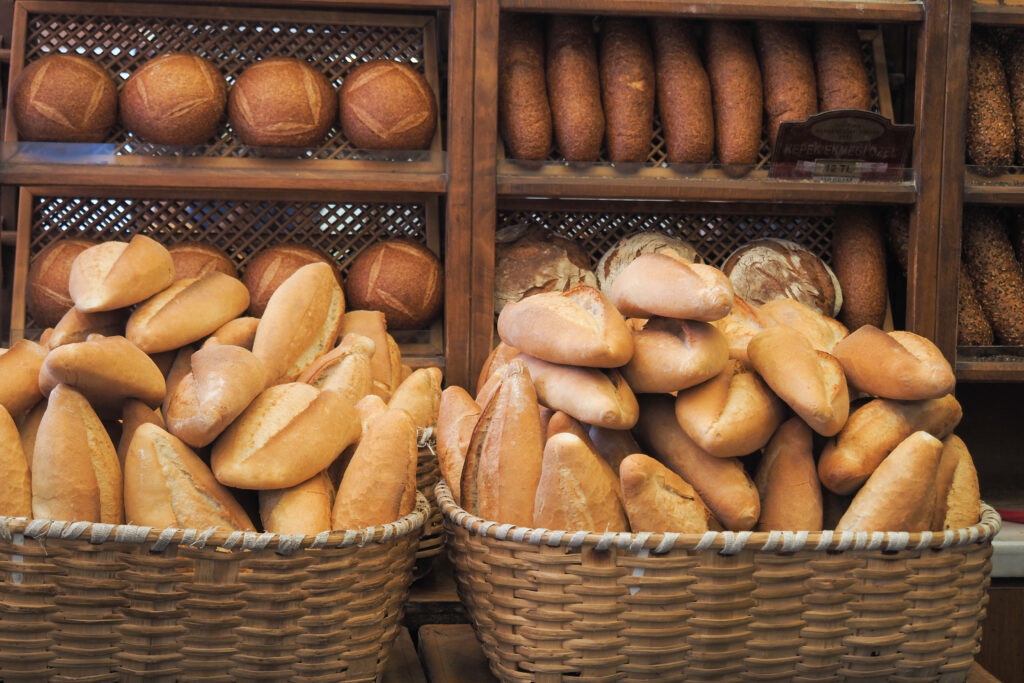
Of Markets, Memories, and Meats: A Young German's Foray into the World of Trade
Welcome, dear readers, to a vibrant chapter of my childhood, where the lines between business, pleasure, and culinary delights blurred in the most delightful way. As a budding enthusiast in the world of trade and livestock during the 1950s in Germany, my experiences in the farms and markets of the Hohenlohe Ebene were more than just pastimes; they were my first forays into a world rich in tradition, community, and the art of the deal.
A Farmyard Classroom
Picture a young lad, that’s me, spending every scrap of free time in the farms, amidst animals of all shapes and sizes. Pigs, cows, sheep, chickens, and even the occasional turkey and goose were my companions. I was the unofficial apprentice to the older farmers, helping with feeding, cleaning stalls, and generally trying to be more helpful than a hindrance.
The Iron Smith’s Forge: Where Horses Got Pimped
One of my fondest memories involves the local iron smith. The sheer awe of watching horses getting shoed was like witnessing a medieval craft in full swing. The smith, with his burly arms and a face that told a thousand stories, was a magician in my young eyes.
A Culinary Awakening
Amidst the chores, there was always the promise of food – the heart and soul of German farm life. The women of the house, guardians of culinary secrets, would often treat me to a sneak peek (and taste) of their creations. From slices of fruit cake to various delectable German open sandwiches, each bite was a step closer to my destiny in the culinary world. Little did I know, these tasting sessions were subtly steering me towards my future as a chef.
The Market: A Symphony of Sights, Sounds, and Smells
The weekly market was not just a market; it was a festival of life. Here, amidst the cacophony of voices, animals, and the clinking of coins, I first learned the art of buying and selling.
The Livestock Square: Where Deals Were Struck
In a special corner of the market, amidst the hustle and bustle, was the livestock square. Here, cattle, pigs, and horses were traded in an atmosphere that was electric with excitement and negotiations. The pigs, destined to become the centerpiece of many a German meal, were particularly prized.
A Lesson in Trade: The Hand Schlag
It was here I learned the sacred ritual of the Hand Schlag – the literal striking of hands to seal a deal. No paperwork, no lawyers – just a mutual agreement solidified with a firm handshake. This tradition, steeped in trust and honor, was the bedrock of market transactions.
From Farm to Table: The Journey of Hohenlohe’s Finest
Hohenlohe was not just a region; it was a bastion of quality produce. The livestock raised here provided meat not just for the locals but for the entire country. The packaging plants of the region were a testament to its agricultural prowess.
The Emperor’s Choice: Boeuf de Hohenlohe
Let’s not forget the Boeuf de Hohenlohe, Napoleon’s favorite beef. This was no ordinary meat; it was a culinary export fit for an emperor. Its journey from the pastures of Hohenlohe to the royal tables of France is a story of taste, quality, and prestige.
The Schwäbisch Schweine: A Pork Like No Other
And then there was the Schwäbisch Schweine, a pig that held its own in the pantheon of German meats. To taste this pork was to experience a piece of Hohenlohe itself. To this day, I advise anyone visiting the region to ask for this specific pork at restaurants – it’s a gastronomic experience you won’t forget.
Conclusion: The Market as a Microcosm of German Life
Looking back, the markets of the 1950s were more than just places of commerce; they were the beating heart of German culture and tradition. They were where I learned the values of hard work, the joy of community, and the importance of a handshake. So come, walk with me through the memories of a time when the simplicity of a handshake sealed deals, and the quality of your word was your most valuable currency.
The Art and Soul of German Butchery: Der Schlacht Tag
Gather around, dear readers, for a tale of tradition, taste, and the timeless ritual known as ‘Der Schlacht Tag,’ or Butchering Day. In the heart of Germany, particularly in the culturally rich region of Hohenlohe, butchering a pig isn’t just a culinary practice; it’s an art form, a communal event, and a celebration of a way of life that has endured through the ages.
The Ritual of Der Schlacht Tag
Imagine a crisp morning, the kind where your breath forms little clouds in the air, and the whole village buzzes with anticipation. Der Schlacht Tag is more than just butchering; it’s a day where friends, family, and neighbors come together, each playing a part in this age-old tradition.
1. The Gentle Sleep
In the modern era, animal welfare takes precedence. The pig is first gently put to sleep – a nod to the humane practices that are now integral to this tradition. The respect for the animal is paramount, setting the tone for the day.
2. The Skillful Kill
The next step is the careful, respectful use of the knife. This isn’t just about efficiency; it’s about honoring the life that’s being given. The blood is carefully collected – not a drop wasted – earmarked for the delectable blood sausages that are a staple of German cuisine.
3. The Steam and Scrape
Then comes the steam oven, a modern evolution of the old ways. The pig is cleaned quickly; any delay makes the task harder. This step is both a science and an art, requiring swift precision.
4. The Gallows and the Saw
Hanging from a gallow, the pig is washed and then masterfully split open. The removal of innards is a task reserved for the skilled, and the sawing of the pig into halves is a spectacle of expertise.
5. The Empty Belly
A curious but crucial preparation – the pig isn’t fed before the butchering day. This age-old wisdom makes the cleaning of the intestines a less daunting task, showcasing the blend of practicality and tradition.
6. The Butcher’s Ballet
Now, the butcher takes center stage. His or her knives are like wands, turning the pig into culinary gold. The meats for sausages are carefully selected – liverwurst and blood sausages are the stars of the day.
The Symphony of Sausage Making
Two bowls stand ready, one for each type of sausage, each with its own blend of spices – a melody of flavors waiting to dance together. The meat is ground, mixed, and lovingly stuffed into casings. What’s left is canned, ensuring nothing goes to waste.
A Culinary Celebration
But Der Schlacht Tag isn’t just about the butchering. It’s a day filled with feasting and fellowship. The metzel soup, made from the sausage cooking stock, is a divine concoction, rich with exploded sausage bits. The second course is a parade of pork delicacies – tail, snout, ears, cheeks, and, of course, the sausages, all served on a bed of cabbage.
The Sausages of Hohenlohe
Let’s not forget the local heroes – the Farmer’s Bratwurst, the Liverwurst, and the Oberlander. These sausages, each with a story of its own, are a testament to the region’s rich culinary heritage.
Conclusion: More Than Just Meat
So there you have it, a peek into the world of German butchering and sausage making. Der Schlacht Tag is a vivid tapestry of tradition, community, and gastronomy. It’s a day that encapsulates the soul of German culinary culture, where every slice tells a story, and every bite is a piece of history. Stay tuned, as I’ll soon share some secret recipes that bring the essence of Hohenlohe right into your kitchen – a delicious challenge worth undertaking!
The Rhythmic Appetite of Germany – A Tale of Vesper and Virtue
In the enchanting lands of Germany, particularly in the industrious region of Baden-Württemberg, the daily rhythm of life is punctuated not just by the clock but also by a culinary tradition as old as time – the Vesper. As a chronicler of German customs and an aficionado of its gastronomic heritage, allow me to guide you through the nuances of this quintessential German eating habit, a tradition that intertwines effortlessly with the ethos of a nation.
The Morning and Afternoon Vesper
The day in Germany commences modestly, often with just a splash of milk over cereal. However, as the clock strikes ten, a richer culinary scene unfolds. This is Vesper time, a tradition observed with equal reverence again at three in the afternoon. Vesper, in its essence, is more than a meal; it’s a testament to the German belief in doing things with care and precision.
A Symphony of Choices
Vesper can be warm or cold, but it’s always a bounty. Picture a spread of cheeses, an array of sausages, sour kidney, liver schmalz (a prized spread made from pig’s fat), pickles, pretzels, potato salad, fresh radishes, and tomatoes. Each item is a chapter in Germany’s culinary story, rich with flavor and history.
The Guest House Tavern: Where Deals Were Sealed
In days gone by, Vesper was often enjoyed in the local guest house or tavern. Here, amidst the clatter of knives and forks (often just a trusty pocket knife used for both cutting and spearing), business transactions were conducted and sealed with handshakes, sans lawyers or notaries. This tradition underscores the German values of trust and straightforwardness.
A Tradition Transcending Time
From bankers to government officials, hoteliers to farmers, and construction workers, Vesper is a practice deeply rooted in German culture. It cuts across professions, uniting everyone in a ritual that spans centuries. It’s a moment in the day to pause, refuel, and socialize, often accompanied by a bottle of beer – but always with the unspoken rule of moderation and sobriety.
The Swabian Ethos
In Swabia, a region renowned for its diligence and craftsmanship (think Mercedes and Porsche), the Vesper is imbued with deeper meaning. The saying “Schaffe, Schaffe, Häusle baue und dann verrecke” (Work, work, build a house, and then die) may sound grim, but it epitomizes the Swabian commitment to hard work and frugality. Vesper, in this context, is not just a meal; it’s a well-earned break, a moment of enjoyment amidst a life of toil and endeavor.
The German Response: “Es könnte besser sein”
If you ask a German “Wie geht es Ihnen?” (How are you?), the reply is often “Es könnte besser sein” (It could be better). This isn’t pessimism but rather a reflection of a culture that is always striving, always seeking to improve – a trait that is as much a part of German life as the Vesper itself.
Conclusion: Vesper – A Cultural Pillar
In sum, Vesper is more than just an eating habit; it’s a cultural pillar, a daily reminder of Germany’s rich history, its work ethic, and its culinary prowess. It’s a tradition that brings together the simplicity of a meal and the complexity of a culture, a practice that continues to thrive, linking past to present in the rhythm of German life.

The Enchanting Vineyards of Hohenlohe and the River Valleys of Tauber, Kocher, and Jagst: A Journey Through Time and Taste
In the heart of Germany, nestled amidst rolling hills and verdant landscapes, lie the wine regions of Hohenlohe and the picturesque valleys of Tauber, Kocher, and Jagst. These regions, steeped in history and tradition, offer a unique journey through the rich tapestry of German viticulture, where each vineyard tells a story of time-honored practices, royal patronage, and the relentless pursuit of excellence in winemaking.
Hohenlohe: A Royal Legacy
Hohenlohe, a name that resonates with the grandeur of nobility and the echoes of a regal past, is not merely a wine region; it is a testament to Germany’s aristocratic heritage. The area, once ruled by the princely House of Hohenlohe, has a viticultural legacy that dates back to the Middle Ages. The nobles of Hohenlohe recognized the potential of their lands for viticulture, fostering a wine culture that thrived under their patronage. Today, Hohenlohe stands as a beacon of quality and innovation, with wines that reflect the rich diversity of its terroirs.
The River Valleys: Nature’s Cradle for Viticulture
Flowing through the heart of Germany, the rivers Tauber, Kocher, and Jagst carve out valleys that are as fertile as they are scenic. These valleys, with their favorable microclimates and diverse soil compositions, have cradled vineyards for centuries. The Romans, ever the connoisseurs of good wine, were among the first to cultivate vines in these valleys, laying the foundation for a winemaking tradition that would flourish through the ages.
A Symphony of Flavors: The Wines of Hohenlohe and the River Valleys
The wines of Hohenlohe and the river valleys are as varied as the landscapes from which they hail. From the robust reds to the delicate whites, each bottle is a reflection of the region’s unique climate, soil, and historical winemaking practices. Noteworthy among them are the Rieslings, characterized by their crisp acidity and nuanced aromas, which speak of the mineral-rich soils of the region. Equally compelling are the red varieties, including the Trollinger and Lemberger, which offer a moreish palette of flavors, from subtle spiciness to rich berry notes.
Historical Significance and Cultural Importance
The significance of these wine regions extends beyond the bottles produced; it is woven into the very fabric of German history and culture. The vineyards have witnessed the ebb and flow of empires, the rise and fall of dynasties, and the unyielding spirit of the German people. The wine festivals, a staple of the regional cultural calendar, are a vibrant celebration of this heritage, where the community comes together to honor the fruits of their land and the labor of the vintners.
A Commitment to Excellence: Modern Innovations and Sustainable Practices
In recent years, the winemakers of Hohenlohe and the river valleys have embraced modern viticultural techniques, marrying tradition with innovation to elevate the quality of their wines. Sustainable practices, from organic viticulture to water conservation, underscore a commitment to preserving the natural beauty and fertility of the land for future generations. This dedication to excellence and sustainability has garnered international acclaim, positioning these regions as exemplars of German winemaking prowess.
An Invitation to Explore
The wines of Hohenlohe and the Tauber, Kocher, and Jagst valleys are more than just beverages; they are a journey through the annals of German history, a taste of the rich cultural tapestry of the region, and a tribute to the art of winemaking. Whether you are a seasoned oenophile or a curious explorer, these wine regions offer an enchanting voyage into the heart of Germany’s viticultural heritage. So, raise a glass to the enduring legacy of Hohenlohe and the river valleys, where every sip is a story waiting to be told.
Wines of Hohenlohe
Trollinger: Often associated with the broader Swabian region, Trollinger is particularly cherished in Hohenlohe for its light, fresh, and fruity profile. This red wine, with its bright red hue, is a favorite for its easy-drinking nature and is a testament to the area’s ability to produce approachable yet nuanced wines.
Lemberger (Blaufränkisch): Known internationally as Blaufränkisch, Lemberger thrives in Hohenlohe, yielding wines of greater complexity and depth. With its dark, inky color and flavors of dark berries, spices, and sometimes a hint of chocolate, Lemberger showcases the region’s capability to produce more structured and age-worthy reds.
Wines of the Tauber Valley
Müller-Thurgau: This white wine varietal, prevalent in the Tauber Valley, is appreciated for its mild acidity and floral notes, often with a touch of musk. Müller-Thurgau from this region reflects the gentle landscapes from which it originates, offering a harmonious balance between fruitiness and freshness.
Silvaner: The Tauber Valley’s Silvaner wines are known for their full-bodied character and subtle elegance. They often carry hints of green apple and citrus, with a minerality that speaks to the valley’s terroir. Silvaner represents the Tauber Valley’s wine-making tradition that emphasizes subtlety and depth.
Wines of the Kocher and Jagst Valleys
Riesling: The king of German white wines finds a distinguished expression in the Kocher and Jagst Valleys. These Rieslings are celebrated for their crisp acidity, complex aromatics, and the remarkable ability to age. They can range from bone-dry to sweet, capturing the versatility of the Riesling grape.
Schwarzriesling (Pinot Meunier): Not to be confused with its white grape cousin, Schwarzriesling is a red wine that offers a lighter alternative to the more robust reds of the region. It’s known for its delicate fruit flavors, soft tannins, and versatility, making it an excellent companion to the region’s culinary offerings.
Honorable Mentions
Weissburgunder (Pinot Blanc): Though less famed than its Riesling counterpart, Weissburgunder from these regions is gaining acclaim for its balance of acidity and creamy texture, often with notes of green apples, almonds, and a touch of honey.
Samtrot: Exclusive to the region, this mutation of the Trollinger grape produces wines that are velvety and soft, with a slightly sweeter profile than its parent variety. Samtrot is a local specialty, offering a unique taste of Hohenlohe’s viticultural diversity.
These wines, from the robust Lemberger to the delicate Müller-Thurgau, encapsulate the essence of Hohenlohe and the river valleys of Tauber, Kocher, and Jagst. They are not just beverages but storied expressions of their landscapes, climates, and the people who have nurtured them from soil to glass. As each bottle uncorks, it releases centuries of German winemaking tradition, inviting enthusiasts and novices alike to explore the rich viticultural tapestry of these enchanting regions.
Savoring Tradition: The Quintessential Dishes of Hohenlohe and the River Valleys of Tauber, Kocher, and Jagst
Nestled in the heart of Germany, the Hohenlohe region and the picturesque valleys of Tauber, Kocher, and Jagst are not just landscapes of breathtaking beauty but also cradles of a rich culinary heritage that has evolved over centuries. This area, steeped in history and tradition, offers a palette of flavors that is as diverse as its past. As we delve into the essence of its cuisine, we discover dishes that tell stories of the land, its people, and their journey through time.
Hohenlohe: A Gourmet’s Delight
In Hohenlohe, agriculture and viticulture shape the culinary landscape, giving rise to dishes that reflect the bounty of the region. One such beloved specialty is the Schwäbisch-Hällisches Schweinefleisch. Originating from the Swabian-Hall swine, a breed that dates back to the 1820s, this pork is celebrated for its marbled fat and tender meat, often served roasted with a crust of herbs and spices. The dish not only showcases the region’s commitment to quality and sustainability but also its reverence for heritage breeds.
The Tauber Valley: Where Flavors Flow Like the River
The Tauber Valley, with its fertile lands and ancient vineyards, contributes uniquely to the region’s culinary tapestry. Tauberzander, a dish featuring the succulent Zander fish from the Tauber River, embodies the harmony between the valley’s aquatic and agricultural produce. Typically pan-fried and served with a buttery sauce infused with local herbs, this dish captures the essence of the Tauber Valley’s natural abundance and the simplicity of its cuisine.
Kocher and Jagst Valleys: A Culinary Confluence
The Kocher and Jagst Valleys, characterized by their steep slopes and verdant meadows, are home to Linsen mit Spätzle (lentils with Spätzle), a comforting dish that marries the nuttiness of lentils with the soft, eggy Spätzle. Often accompanied by Saitenwürstchen (a type of thin sausage), this dish is a testament to the German knack for transforming humble ingredients into a symphony of flavors. It speaks of the cold winters and the warmth of the kitchens that dot these river valleys.
Across the Regions: A Shared Heritage
While each area boasts its unique specialties, some dishes transcend regional boundaries, becoming staples on tables across Hohenlohe and the river valleys. Maultaschen, akin to large ravioli, are one such dish. Stuffed with a mixture of meat, spinach, and breadcrumbs, then either boiled or pan-fried, Maultaschen are enveloped in legend, supposedly created by monks as a way to hide meat during Lent. This dish embodies the inventiveness of Swabian cuisine and its ability to tell stories of faith, survival, and creativity.
Apfelküchle
No exploration of this region’s cuisine would be complete without mentioning Apfelküchle, a dessert that encapsulates the love for apples that permeates German culinary traditions. Sliced apples dipped in a sweet batter, fried to golden perfection, and dusted with cinnamon sugar, Apfelküchle are often served with vanilla sauce or ice cream, offering a taste of home, nostalgia, and the simple pleasures of life.
Saure Kutteln (Sour Tripe)
In the culinary tradition of Swabia, which Hohenlohe is a part of, Saure Kutteln holds a special place. This dish, made from tripe cooked in a vinegar-based sauce, is a testament to the German ethos of nose-to-tail eating. Seasoned with onions, bay leaves, and a mix of spices, it offers a tangy and hearty experience that reflects the resourcefulness of regional cooking methods.
Gaisburger Marsch
A storied stew that combines beef, potatoes, carrots, and Spätzle, Gaisburger Marsch is named after the Stuttgart district of Gaisburg. It’s often garnished with fried onions, adding a textural contrast to the tender components of the stew. This dish marries the robust flavors of the land with the delicate craftsmanship of Spätzle-making, encapsulating the soulful warmth of German comfort food.
Zwiebelrostbraten
Zwiebelrostbraten, a simple yet profoundly flavorful dish, showcases the quality of beef from the Hohenlohe region. It consists of thinly sliced beef, traditionally from the sirloin, topped with fried onions. The meat is first seared to perfection, then cooked slowly with onions and often served with a rich gravy alongside potato salad or Spätzle. This dish is a celebration of the region’s cattle farming prowess.
Jagsthausen Forelle (Trout from Jagsthausen)
The clean, cold waters of the Jagst River are ideal for trout, and Jagsthausen Forelle pays homage to this aquatic bounty. The trout are usually prepared “blue” – a cooking method that involves poaching the fish in a vinegar and broth mixture, causing the skin to take on a distinctive bluish tint. Served with melted butter, lemon, and parsley, this dish is a delicate showcase of local river fare.
Unterländer Apfelkuchen (Lower Country Apple Cake)
Reflecting the apple orchards that dot the landscapes of Hohenlohe and the river valleys, Unterländer Apfelkuchen is a beloved dessert. This apple cake is distinguished by its rich, buttery base and generous topping of sliced apples, often spiced with cinnamon and nutmeg. The cake is a testament to the German tradition of Kaffee und Kuchen (coffee and cake), where such desserts are enjoyed as a part of afternoon gatherings.
Bretzeln (Pretzels)
While not unique to this region alone, the Swabian Bretzel has a particular twist to it, both literally and figuratively. Known for its crunchy crust and soft, fluffy interior, the Bretzel in Swabia is often larger and has a more pronounced “arm” twist than its counterparts. Served with butter (Butterbretzel) or simply on its own, it’s a staple of the local diet and a symbol of German bakery artistry.
Schwäbische Maultaschen
Although previously mentioned, it’s worth diving deeper into Schwäbische Maultaschen, a dish so integral to the region’s identity that it deserves a second look. These large, savory dumplings are filled with a mixture of minced meat, spinach, bread crumbs, and onions, then seasoned with various herbs and spices. Often described as Swabia’s answer to ravioli, Maultaschen can be served in broth or fried with onions. Legend has it that Maultaschen were invented by monks to hide meat during Lent, a testament to the region’s ingenuity in the kitchen.
Wildschweinbraten (Wild Boar Roast)
Reflecting the rich hunting traditions of the Hohenlohe region and its surrounding forests, Wildschweinbraten is a celebration of the local game. This wild boar roast, marinated in a mixture of red wine, vinegar, and a bouquet of aromatic herbs, is slow-cooked until tender. The result is a deeply flavorful and hearty dish that encapsulates the essence of the region’s connection to its natural surroundings.
Käsespätzle
Käsespätzle, often referred to as the German version of macaroni and cheese, is a comforting dish where hand-made Spätzle (egg noodles) are layered with grated cheese and topped with crispy fried onions. This dish showcases the region’s dairy produce and the traditional Spätzle, highlighting the simplicity and warmth of Swabian home cooking. It’s a staple that brings families together, especially during the colder months.
Sauerbraten
While Sauerbraten is known throughout Germany, the Hohenlohe version of this marinated pot roast takes on a local twist with the addition of regional spices and a longer marination period in a mixture of vinegar, water, and local wine. This process tenderizes the meat and infuses it with a unique blend of flavors, creating a dish that is both tangy and savory. Traditionally served with red cabbage and Knödel (potato dumplings), Sauerbraten is a testament to the region’s love for slow-cooked, comforting meals.
Hohenloher Plätzchen
On the sweeter side of the culinary spectrum, Hohenloher Plätzchen are delightful little cookies that come in various shapes and flavors, often seasoned with aniseed, lemon zest, or nuts. These baked treats are especially popular during the Christmas season but are enjoyed year-round as a testament to the region’s baking traditions. Each cookie, with its unique decoration, tells a story of family recipes passed down through generations.
A Culinary Tapestry Woven Through Time
The dishes of the Hohenlohe region and the valleys of Tauber, Kocher, and Jagst are threads in a culinary tapestry that weaves through the fabric of German culture and history. From the hearty Wildschweinbraten to the delicate Hohenloher Plätzchen, each recipe is a chapter in the story of a region that has cultivated a rich and diverse gastronomic heritage. As we explore these traditional dishes, we celebrate not only the flavors of the land but also the spirit of innovation and the sense of community that defines the culinary culture of this enchanting part of Germany.
Exploring the Charm of the Konditorei: A German Pastry Shop Tradition
Today, I’d like to delve into the delightful world of the Konditorei, or pastry shop, a cornerstone of German culinary culture distinct from your typical bakery. While bakeries are revered for their bread, the Konditorei is celebrated for its artistry in crafting exquisite cakes and pastries. From the creamy decadence of Cheesecake and the rich depths of Chocolate cake to the refined elegance of Sachertorte and the lush, layered complexity of Black Forest cakes, these pastry shops offer a veritable feast for the senses. Seasonal berries like raspberries, strawberries, blueberries, along with apples, pears, peaches, and plums, are transformed into stunning fruit cakes, while meringues, chocolates, and marzipan creations round out the tantalizing offerings.
Germans have long cherished the tradition of visiting a Konditorei in the afternoon, either to select delicious sweets to enjoy at home or to sit in the designated café area for a slice of cake and a cup of coffee. The ritual begins at the counter, where patrons are greeted by an array of pastries, after which they may choose to take their selections home or find a table to savor their treats onsite, accompanied by a “Kännchen” (small pot) or a “Tasse” (cup) of coffee. This tradition becomes particularly enchanting in the spring, summer, or fall, when sitting outdoors allows one to enjoy the pastries while watching the world go by.
The café culture extends beyond mere culinary indulgence; it has historically been a hub for intellectual and social gatherings. Notably, Lenin, the revolutionary who led the overthrow of the Tsarist government in Russia, spent many afternoons in Swiss cafés plotting to transform the governments in Europe. He harbored doubts about the feasibility of revolution in Russia, given its scant industrial workforce, and considered Western Europe more ripe for his vision of a workers’ paradise. Despite his focus on St. Petersburg and Moscow, the path to revolution was long and marred by civil war. Yet, these cafés remained vibrant meeting places for friends, families, dates, and gatherings of writers, philosophers, painters, and other intellectuals.
This rich tradition of the Konditorei and café is not exclusive to Germany but is also a cherished practice in Austria, Hungary, and the German-speaking parts of Switzerland. To visitors of these countries, I recommend inquiring with your hotel concierge for the best café recommendations in town or simply asking a local during your explorations.
I hope you’ve enjoyed this brief journey into the world of the Konditorei and the unique café culture it supports. Alongside this narrative, I will share a collection of photographs and recipes for the various cakes crafted in these pastry shops, offering a glimpse into the tradition that has been much loved by many.
Authentic German Pastry Making:
Quality of Ingredients: German pastries rely heavily on the quality of their ingredients. Fresh, seasonal fruits for fillings, high-quality butter for richness, and the proper type of flour for each pastry are crucial for authenticity.
Precision: Baking is a science, and this is especially true for German pastries. Measuring ingredients accurately is key to achieving the desired texture and flavor.
Patience and Practice: Techniques such as kneading dough for Stollen, tempering chocolate for Sachertorte, or layering Baumkuchen require patience and practice. Don’t be discouraged by initial challenges.
Understanding Traditions: Knowing the story behind each pastry can add depth to your baking. For example, the marzipan in Stollen symbolizes the baby Jesus wrapped in swaddling clothes. Such traditions can inspire your approach to each recipe.
Decoration and Presentation: German pastries are not only about taste but also about presentation. Learning traditional decoration techniques, such as the lattice top for Apfelstrudel or the cherry and whipped cream topping for Schwarzwälder Kirschtorte, can enhance the authenticity of your creations.
For those eager to dive into German pastry making, I recommend starting with simpler recipes like Pflaumenkuchen or Butterkuchen to build confidence before tackling more complex pastries like Baumkuchen or Schwarzwälder Kirschtorte. Online tutorials, culinary classes specializing in German baking, and cultural cooking workshops can also provide valuable hands-on experience.
Remember, the joy of baking lies as much in the process as in the final product. Each pastry you make is a step closer to mastering the art of German baking, carrying forward the rich traditions and flavors of Germany’s culinary heritage.
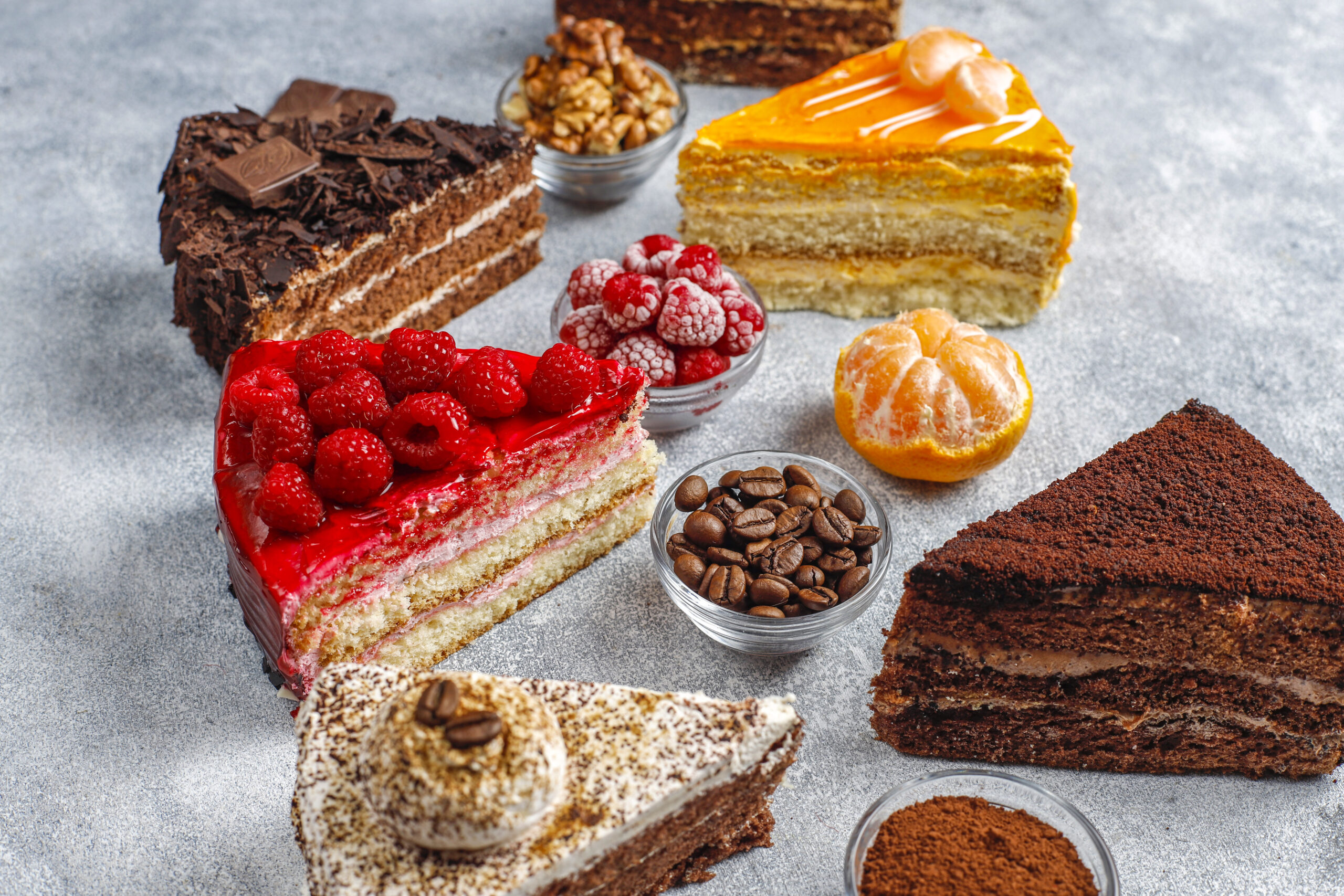
The Rich Past of German Christmas Traditions
Embarking on a journey through the heart of German Christmas traditions is akin to wandering through a living museum, where each custom, each flavor, and each twinkling light has a story rooted deep in the annals of history. Let’s delve deeper into the historical underpinnings of these cherished traditions, exploring how they’ve evolved over the centuries to become the festive hallmarks we know and love today.
The Advent of Anticipation: A Lutheran Legacy
The tradition of Advent, marking the anticipation of Christ’s birth, is deeply embedded in German Lutheran heritage. The Adventskranz, or Advent wreath, was a concept introduced by Johann Hinrich Wichern in the 19th century. Wichern, a Protestant pastor and the founder of the Rauhes Haus (a home for the poor in Hamburg), devised the wreath to teach children the meaning of Christmas and the concept of waiting. This practice quickly spread across Protestant communities and later, embraced by Catholics, becoming a nationwide symbol of the Advent season.
Christkindlmarkt: From Medieval Trade Fairs to Festive Markets
The origins of the Christkindlmarkt can be traced back to the late Middle Ages, serving initially as winter markets that provided townsfolk with essential goods and supplies for the cold months. These markets gradually incorporated elements of celebration and festivity, transforming into the Christmas markets we see today. The Dresden Striezelmarkt, established in 1434, is one of the oldest documented Christmas markets. It was originally held to provide the city’s citizens with the necessary food and supplies for the winter, evolving over time into a grand celebration of the season, showcasing the enduring nature of these markets as centers of community life.
Culinary Delights: A Feast of History
The gastronomic traditions of German Christmas are as diverse as they are delicious, each with its own story. The Christmas goose, for instance, has its origins in the St. Martin’s Day feast, a November celebration that gradually became associated with Christmas. This transition reflects the adaptability of traditions, as they evolve to fit the changing tides of culture and society.
The Stollen, Dresden’s pride, has a particularly fascinating history. Initially a simple, fasting food eaten during Advent, it was transformed in the 15th century when Pope Innocent VIII granted the Saxon bakers permission to use butter (through the famous “Butter-Letter”), enriching its flavor and texture. This evolution from austerity to abundance mirrors the broader historical shifts in Christmas celebrations, from somber, reflective periods to times of joy and indulgence.
The Tannenbaum: A Symbol Transformed
The Christmas tree, or Tannenbaum, has perhaps undergone the most remarkable journey of all German Christmas traditions. While evergreens had been used in winter solstice celebrations for centuries, the practice of bringing a tree indoors and decorating it is a distinctly German innovation of the 16th century. It was Martin Luther who, legend has it, brought the first decorated tree into his home, inspired by the starlit fir trees on a winter night. This personal, family-oriented tradition gained royal endorsement in the 19th century when Queen Victoria and Prince Albert (of German origin) displayed a Christmas tree at Windsor Castle, thus popularizing the tradition across Britain and the broader English-speaking world.
Reflection and Renewal: The Deeper Meanings
Beyond the visible festivities and culinary delights, German Christmas traditions are imbued with layers of deeper meaning and reflection. The quiet observance of Advent, the communal joy of the Christmas markets, and the familial warmth of Christmas Eve are all expressions of a culture that values reflection, community, and renewal. These traditions, while festive, are also reminders of the cycles of the year, the importance of family and community, and the enduring hope for peace and goodwill.
As we celebrate these traditions today, we’re participating in a historical continuum, embracing practices that have been shaped by centuries of faith, culture, and community. German Christmas traditions are not just annual festivities; they are the living heritage of a rich and complex history, offering warmth and light in the depth of winter, and connecting us to the generations who have celebrated before us.
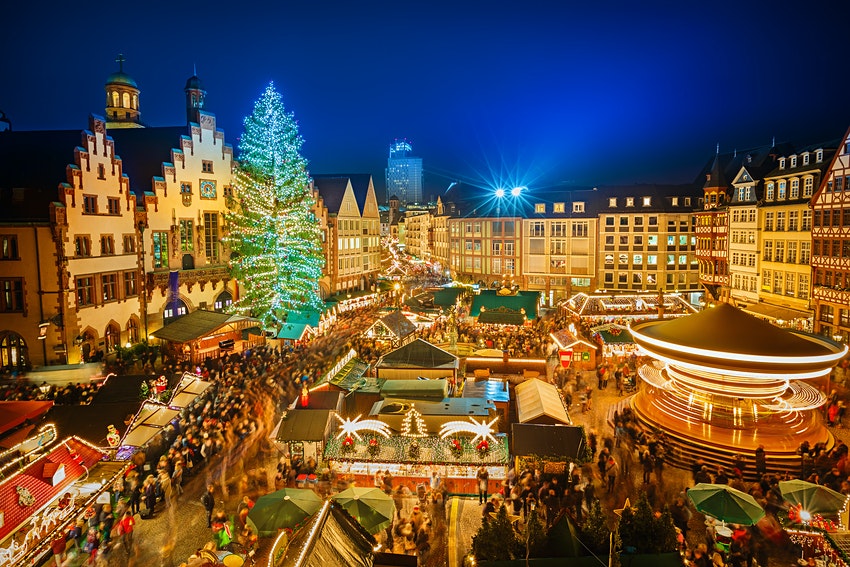
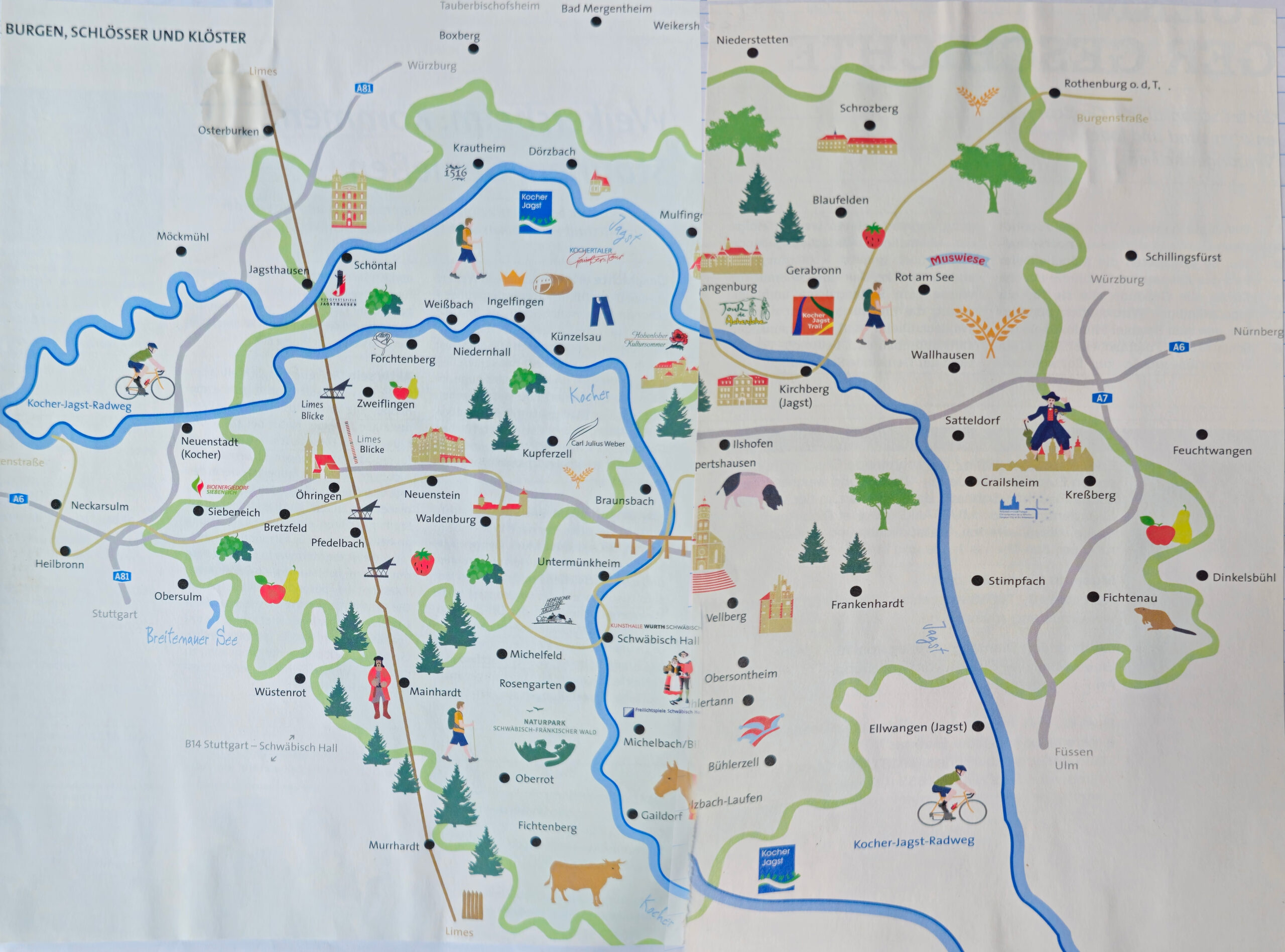

Conclusion: A Saxon-Anhalt Childhood
Wrapping up my tale of a childhood spent in Saxon-Anhalt, I’ve given you just a peek into a kid’s life in this charming corner of post-World War II Germany. Growing up in the countryside, in the heart of Saxon-Anhalt and the Hohenlohe Ebene, might just have been the cornerstone of my culinary journey.
For those curious souls who want more than a glimpse, I’ve penned down a book. Packed with vivid pictures and tales of places worth visiting, this isn’t your typical tourist guide. It skips the Grand Tour that most foreigners embark on and instead dives deep into the romantic, often overlooked, nooks frequented by Germans themselves.
In my book, you’ll uncover the secret culinary world of Germany—the vineyards, wines, beers, and spirits that seldom leave their birthplace, enjoyed right where they’re crafted. I’ve included a treasure trove of dessert recipes, celebrating our beloved tradition of “coffee and kuchen,” along with numerous regional specialties.
Forget the clichéd images of lederhosen, beer steins, sausages, and sauerkraut. And don’t even get me started on Oktoberfest! My book unveils the real Germany, a place that’s stayed true to its roots even as the world around it changes. So, pick up a copy and embark on a journey through the Germany you never knew existed—my Germany.